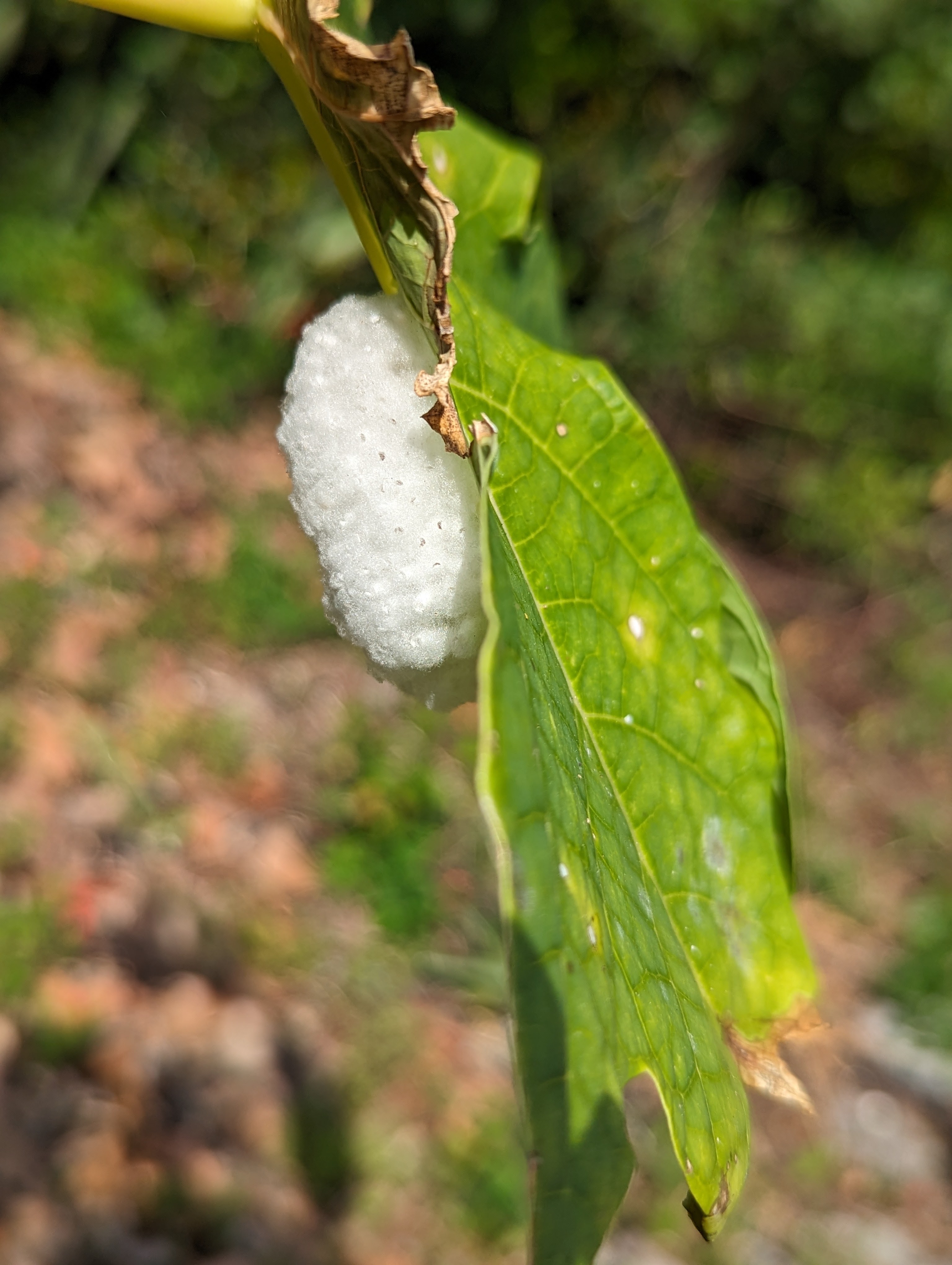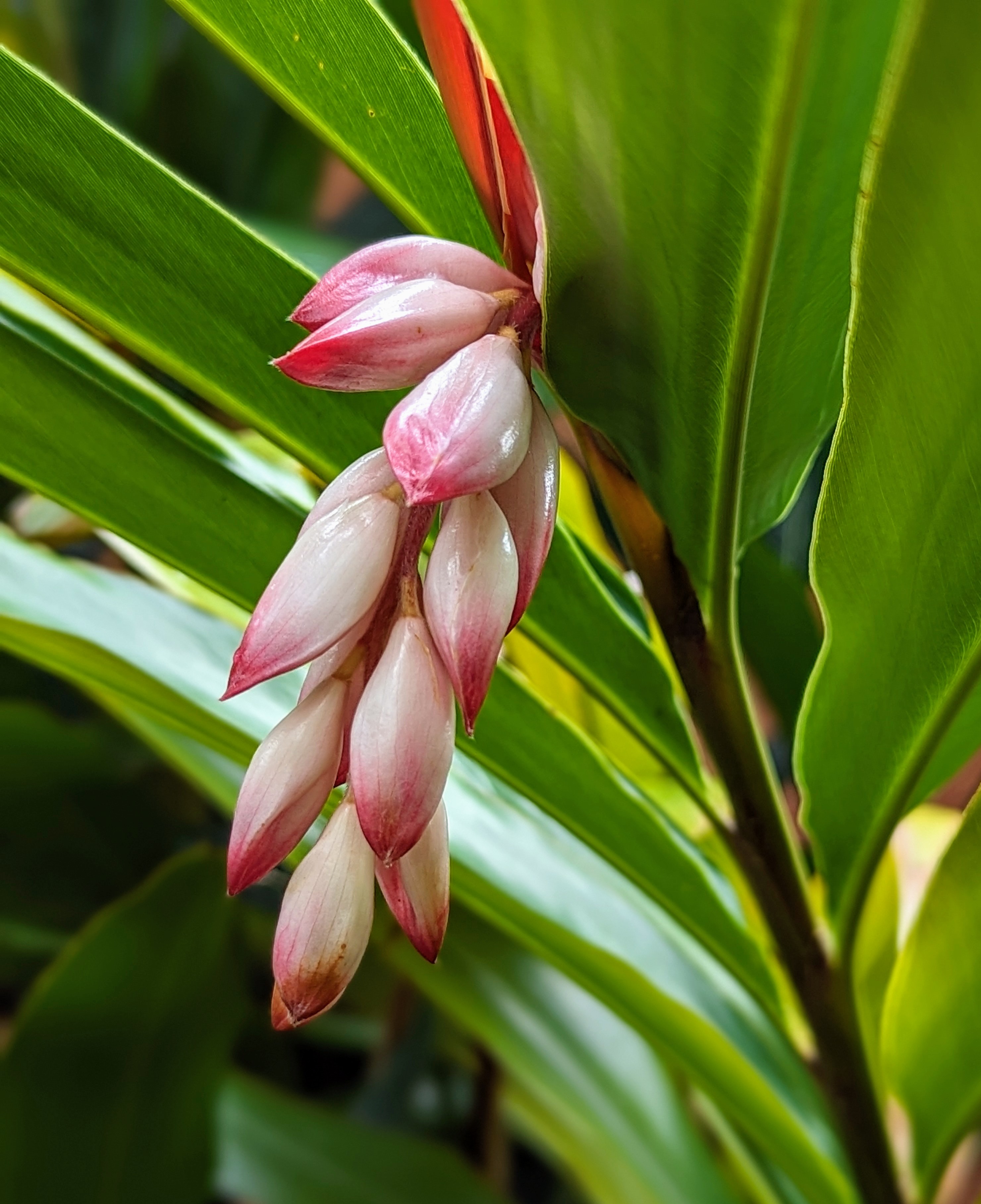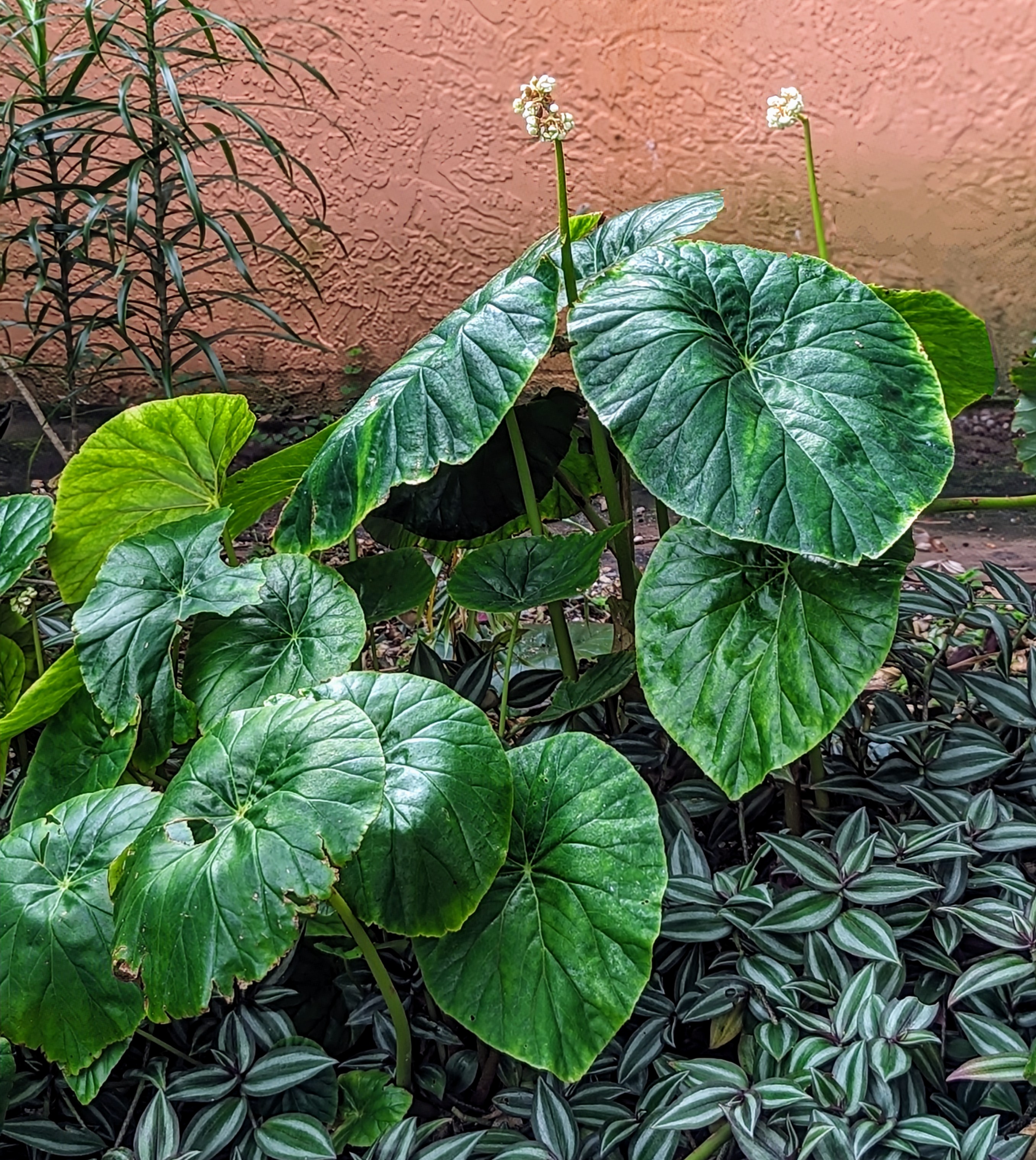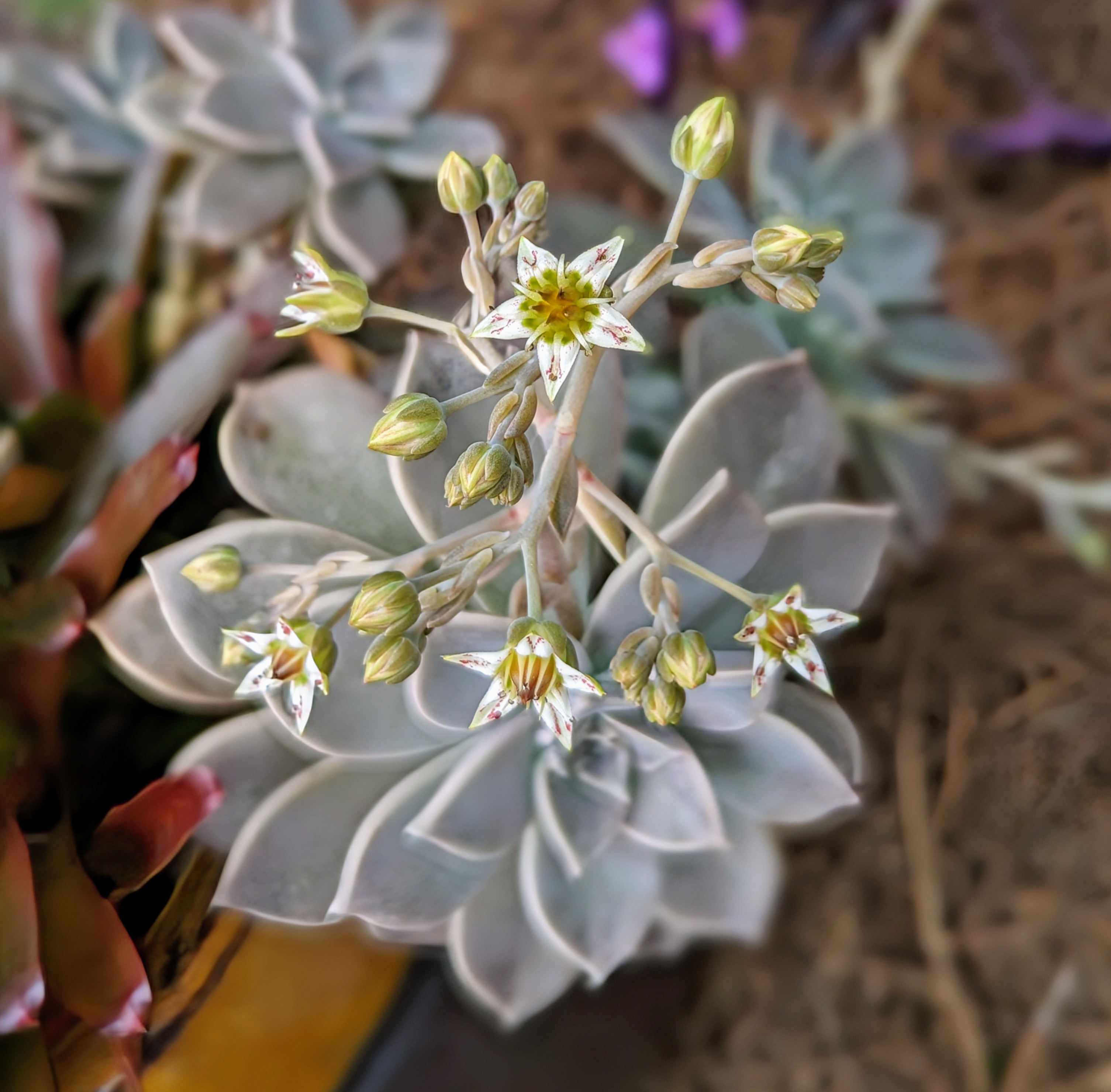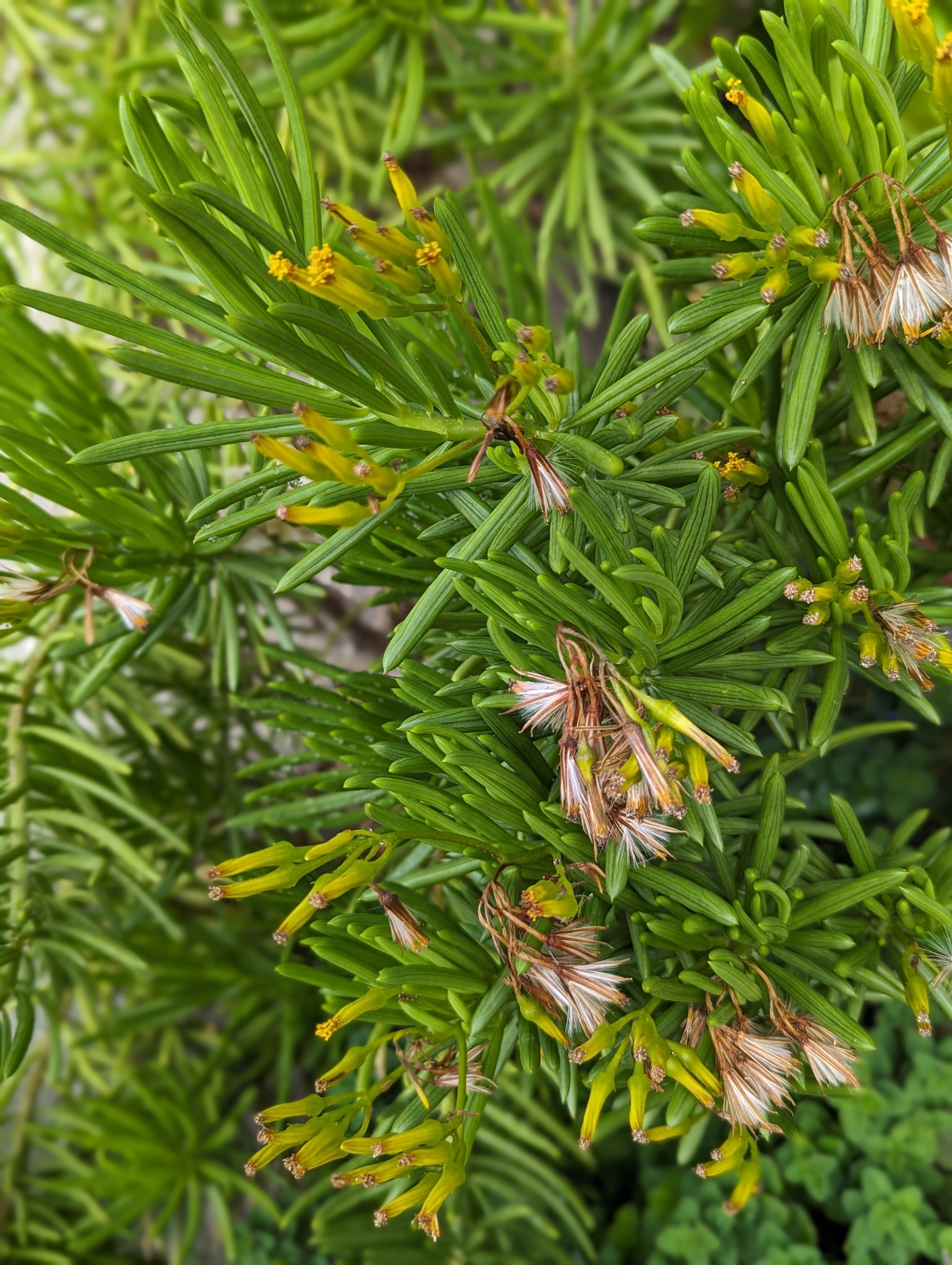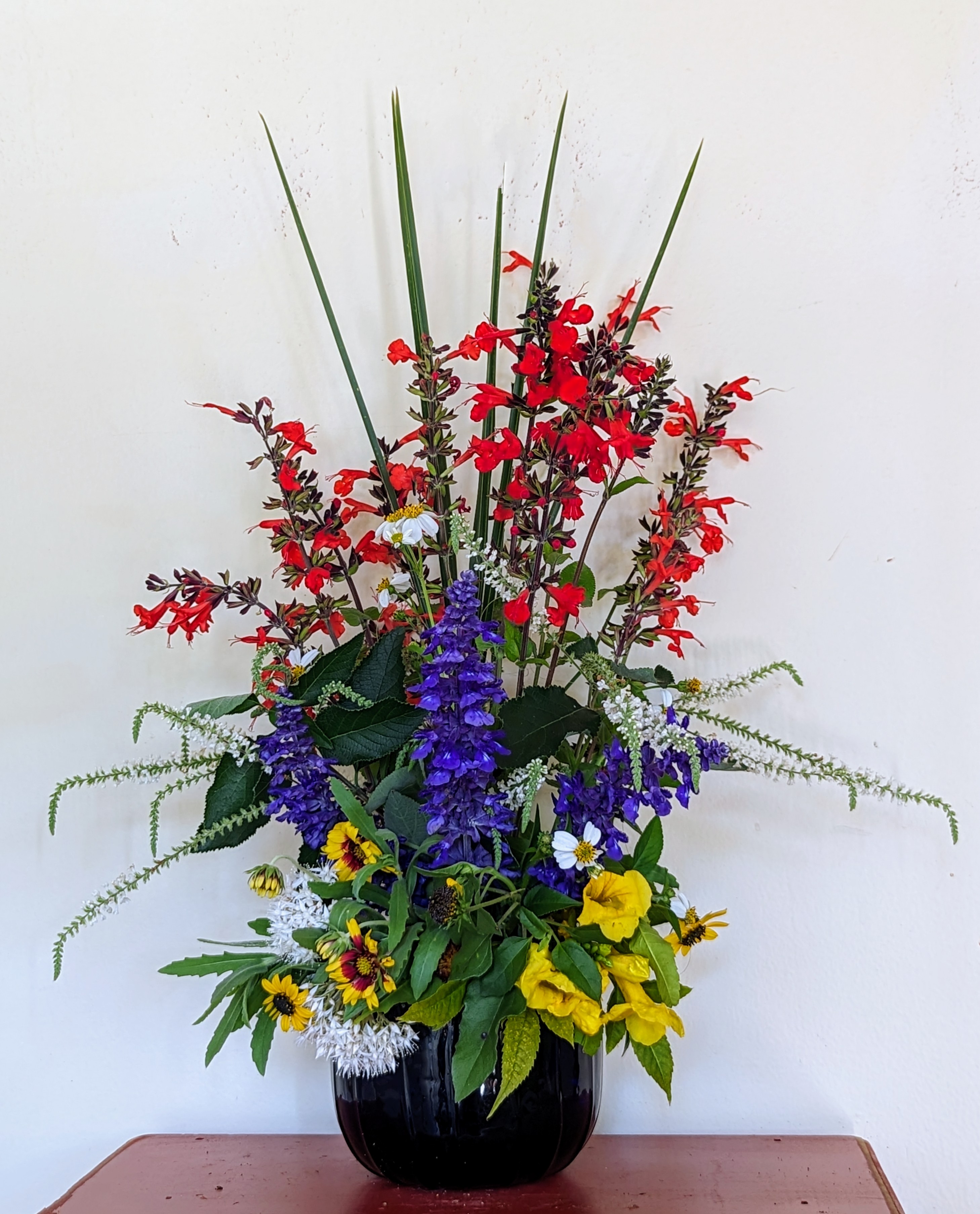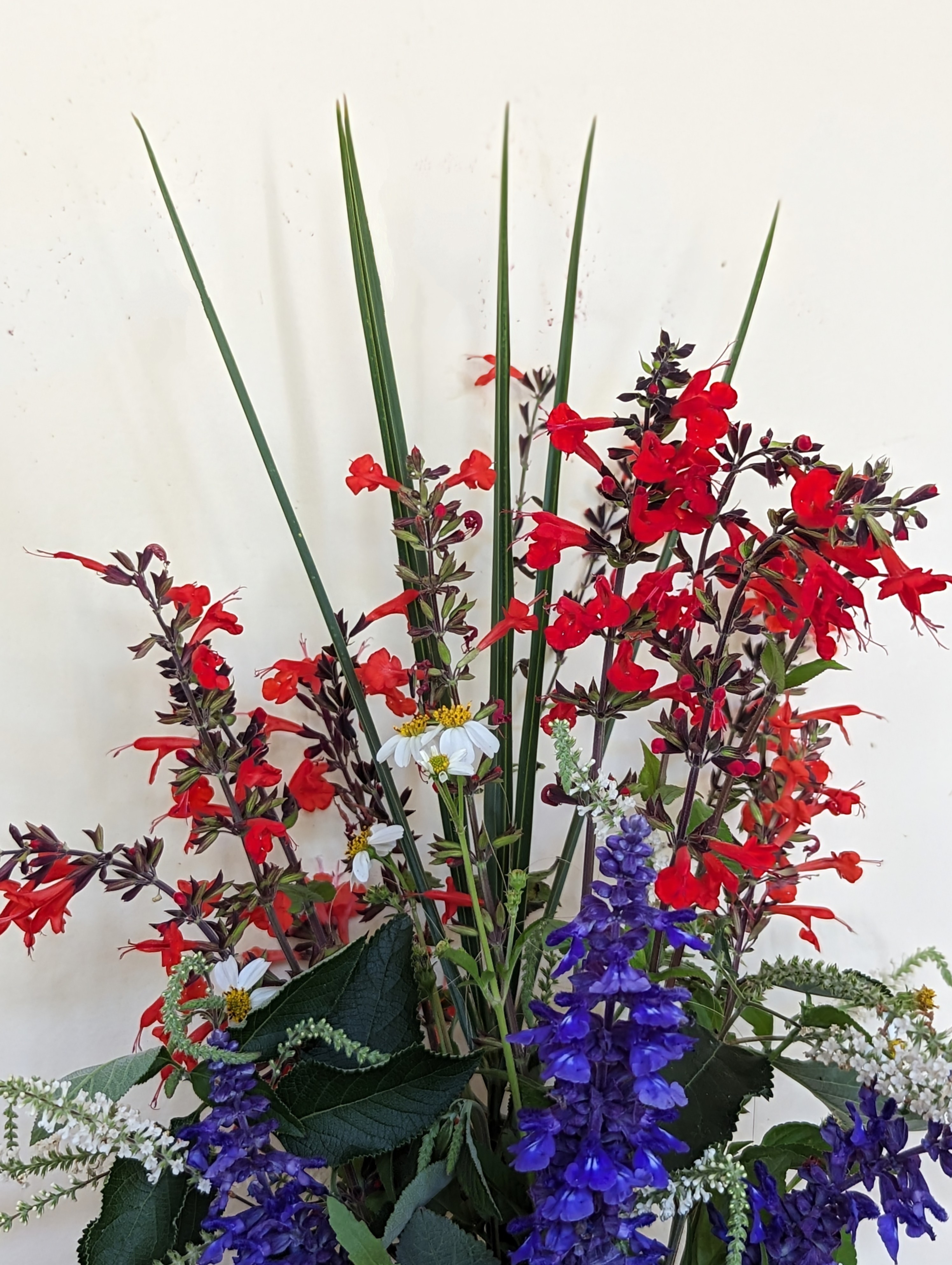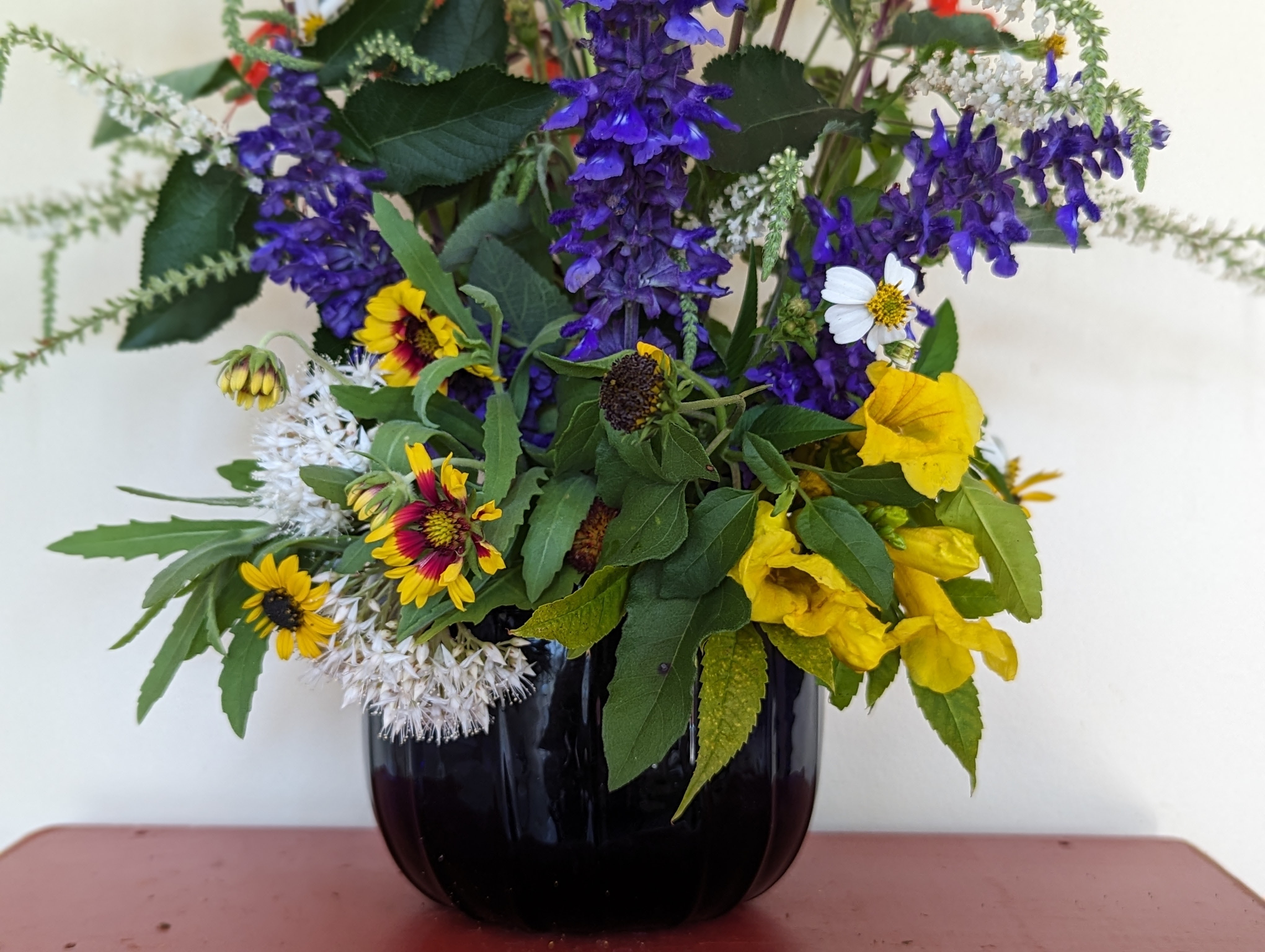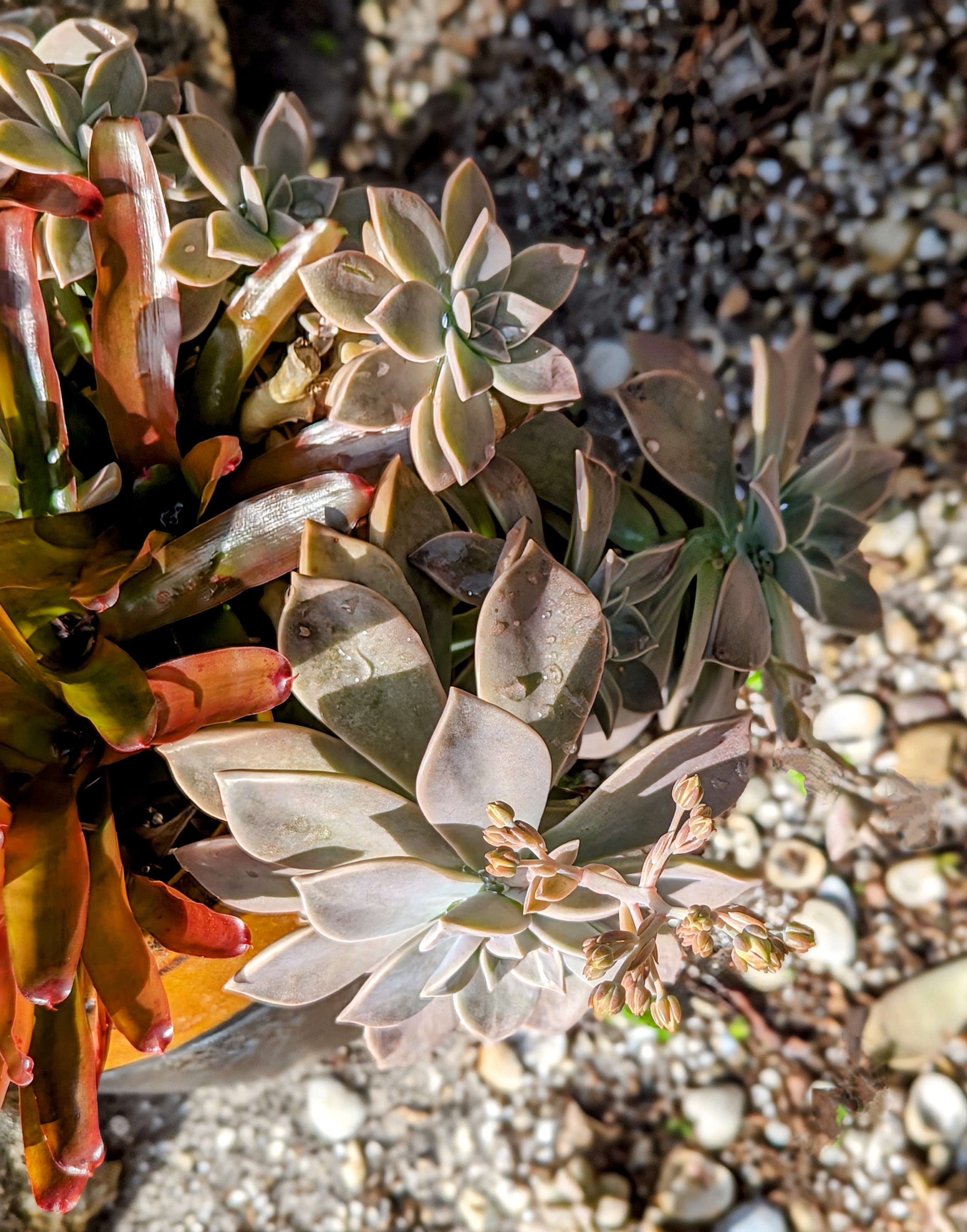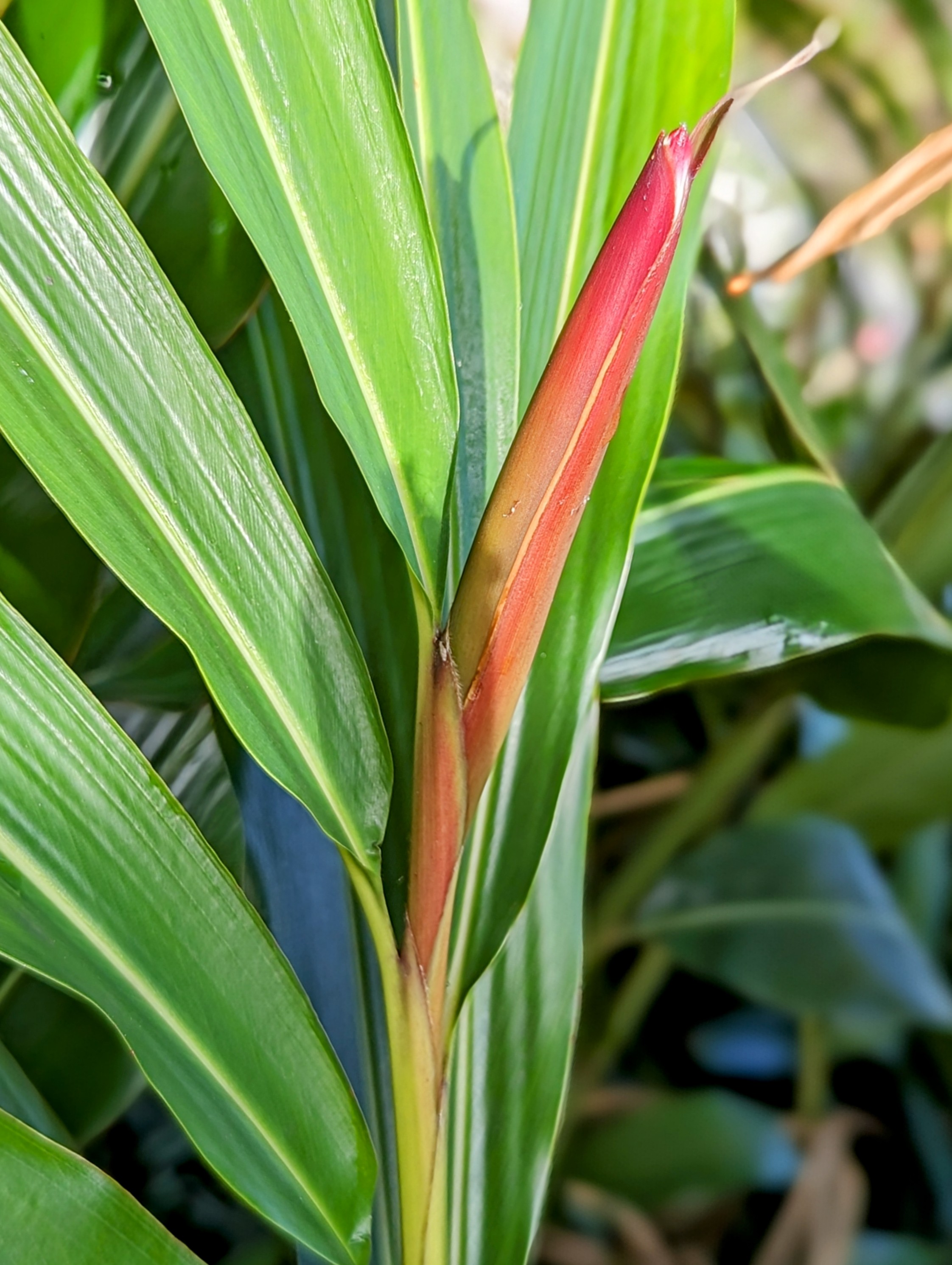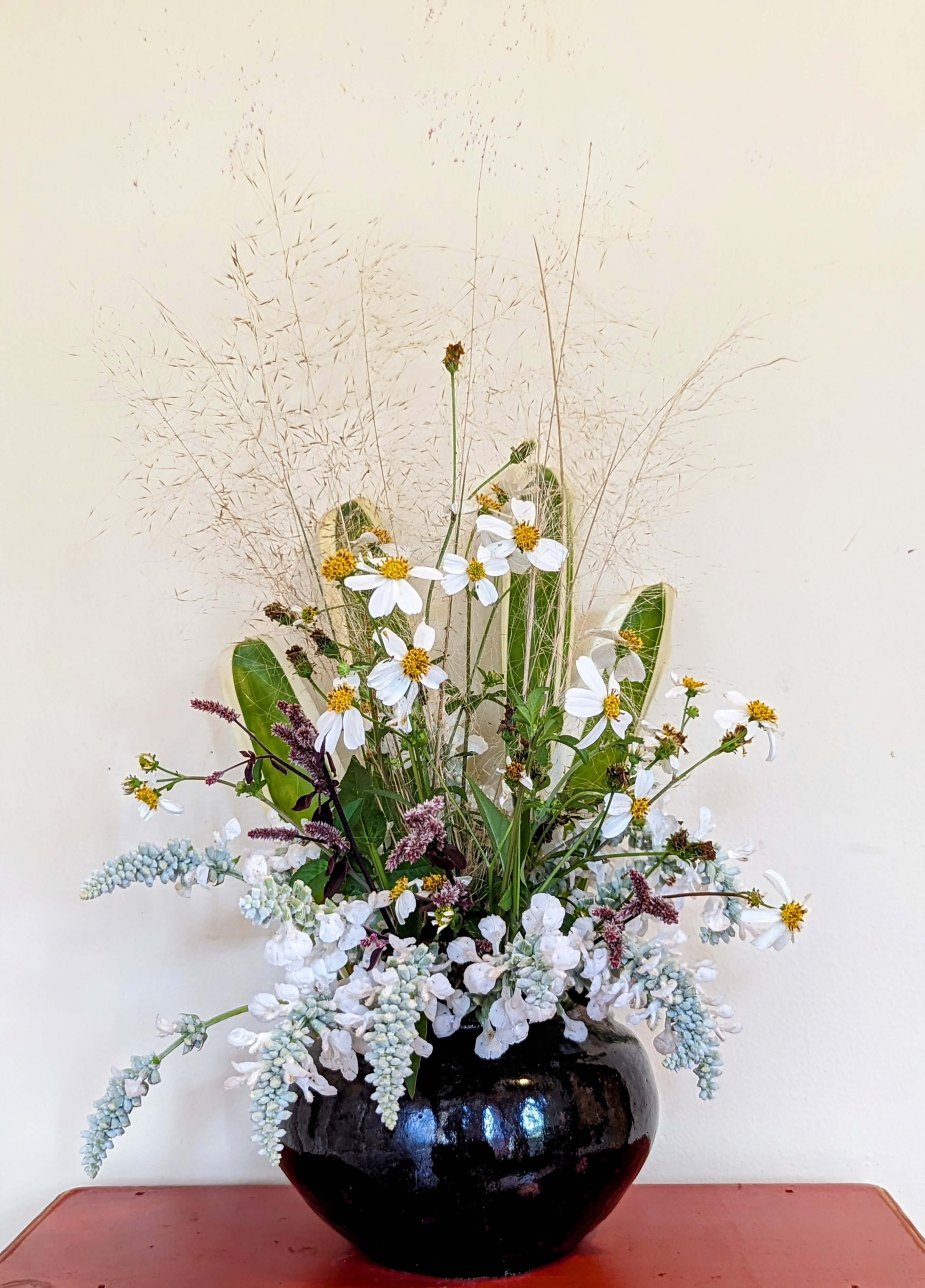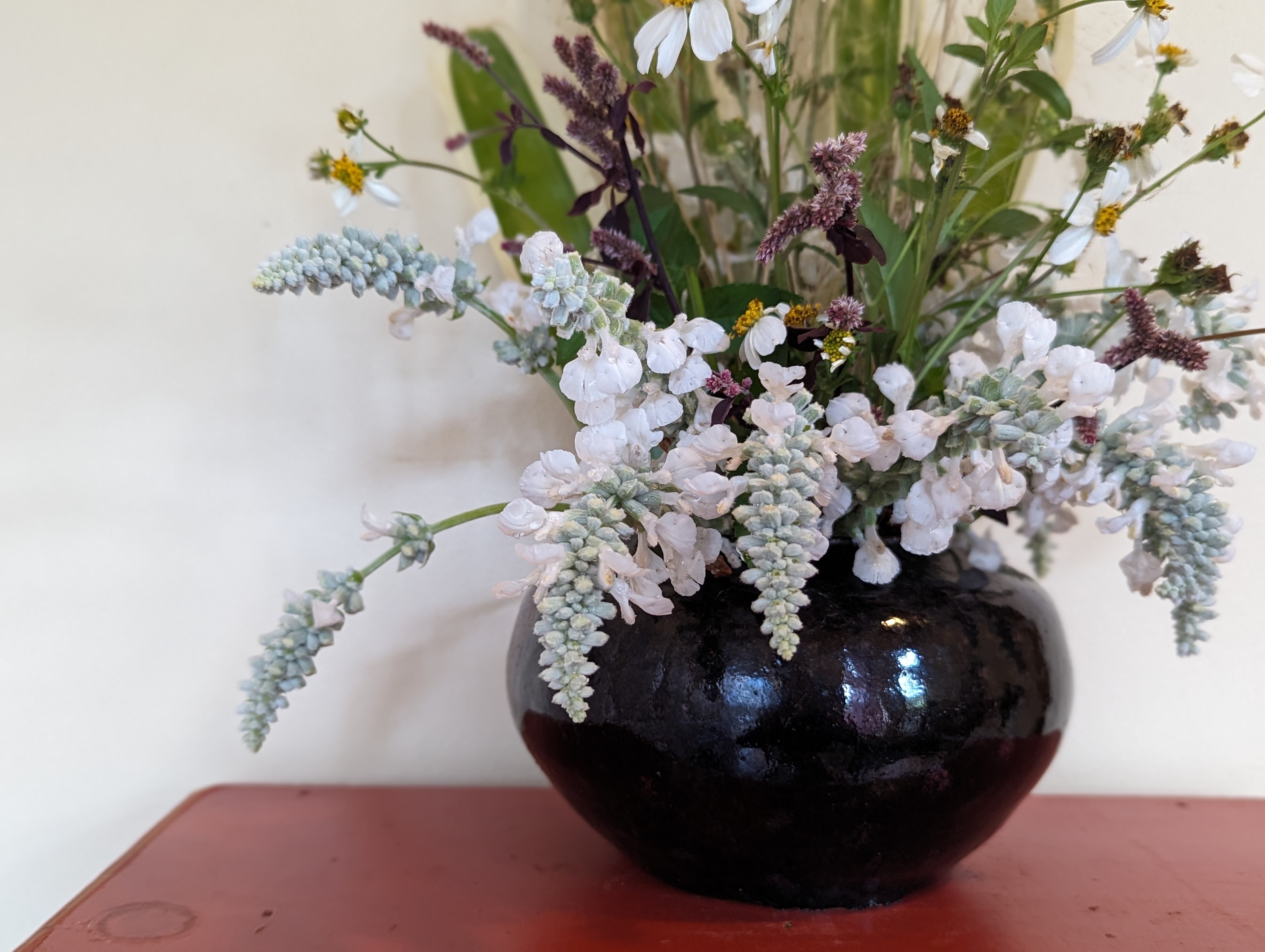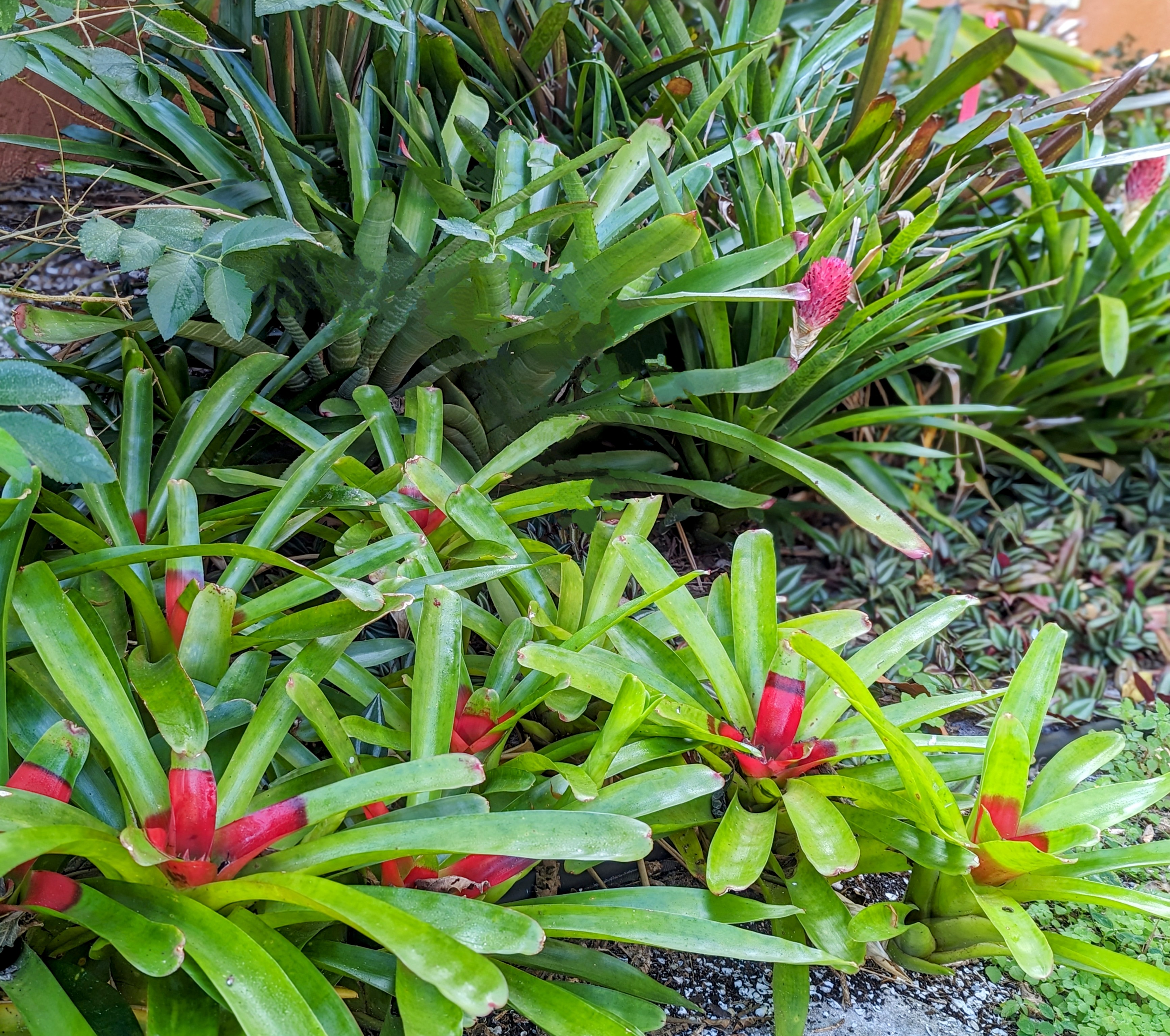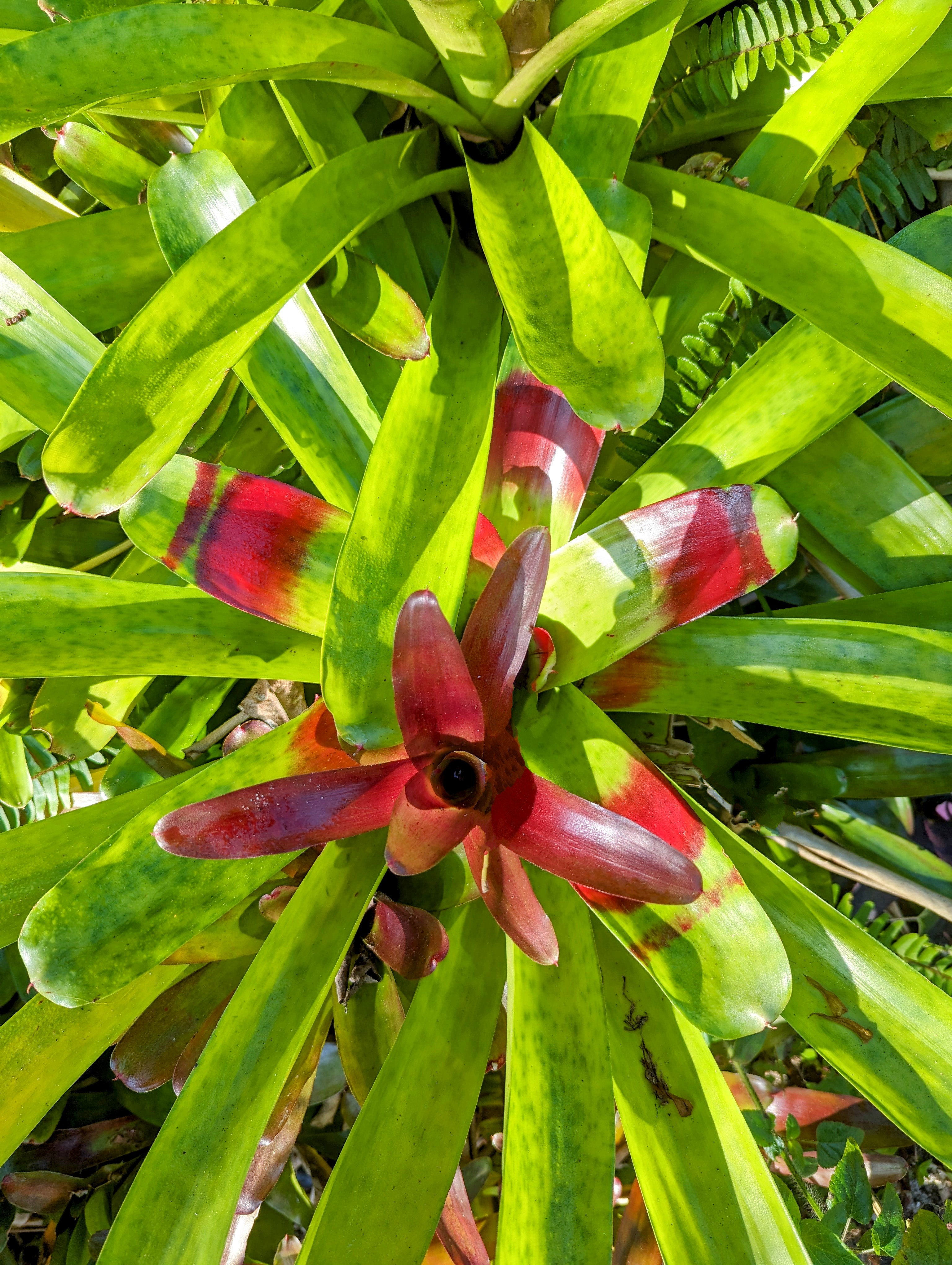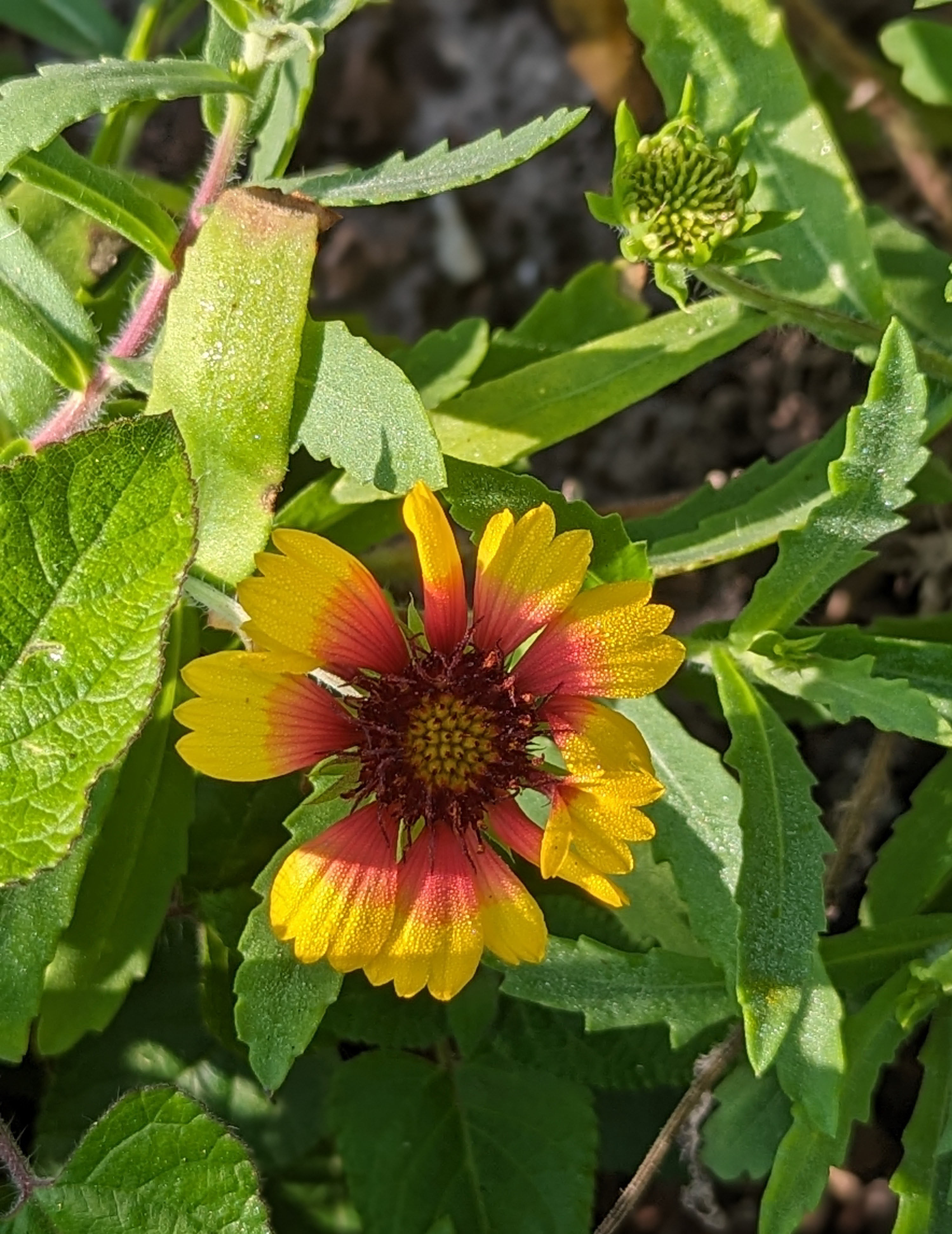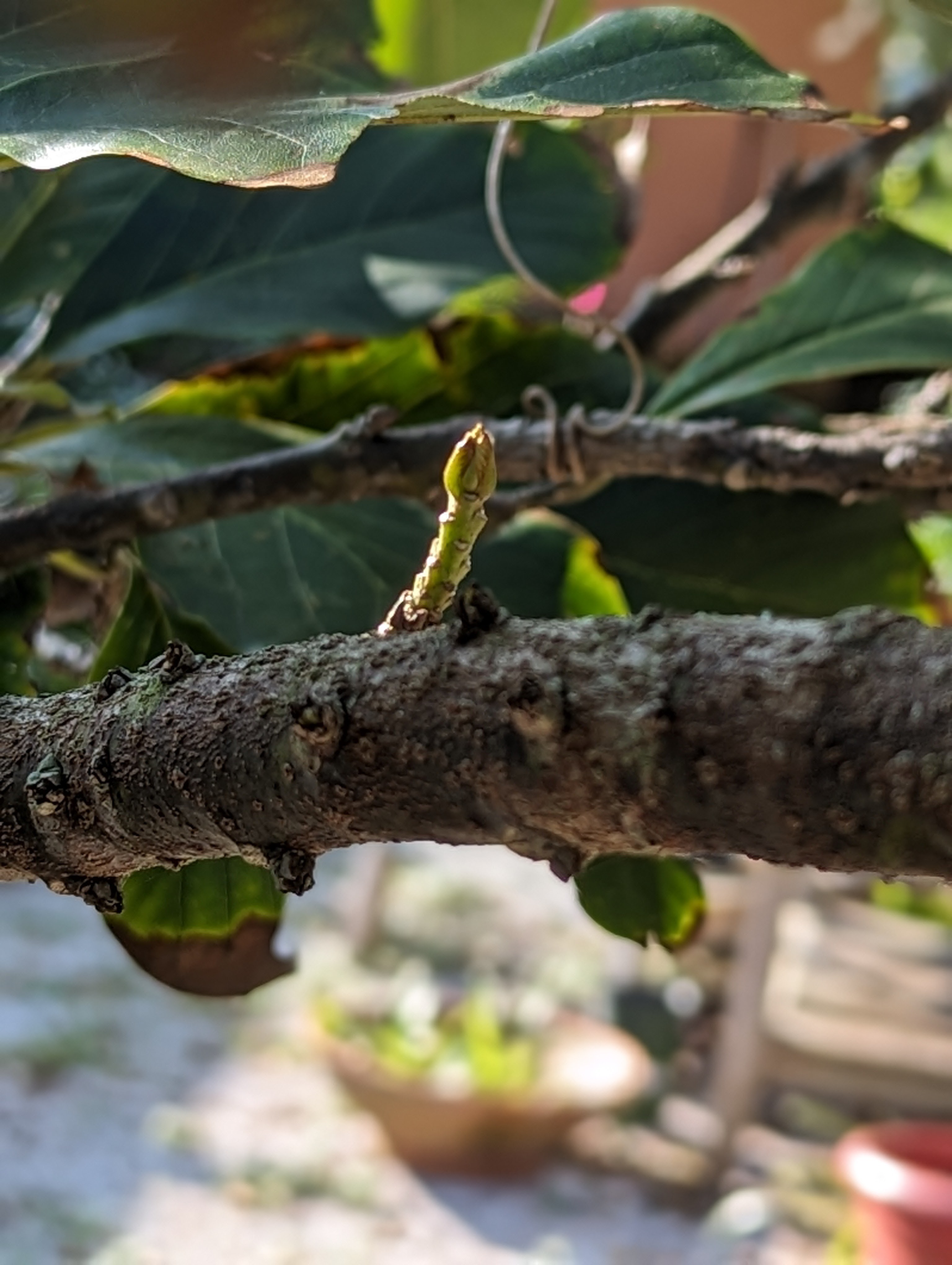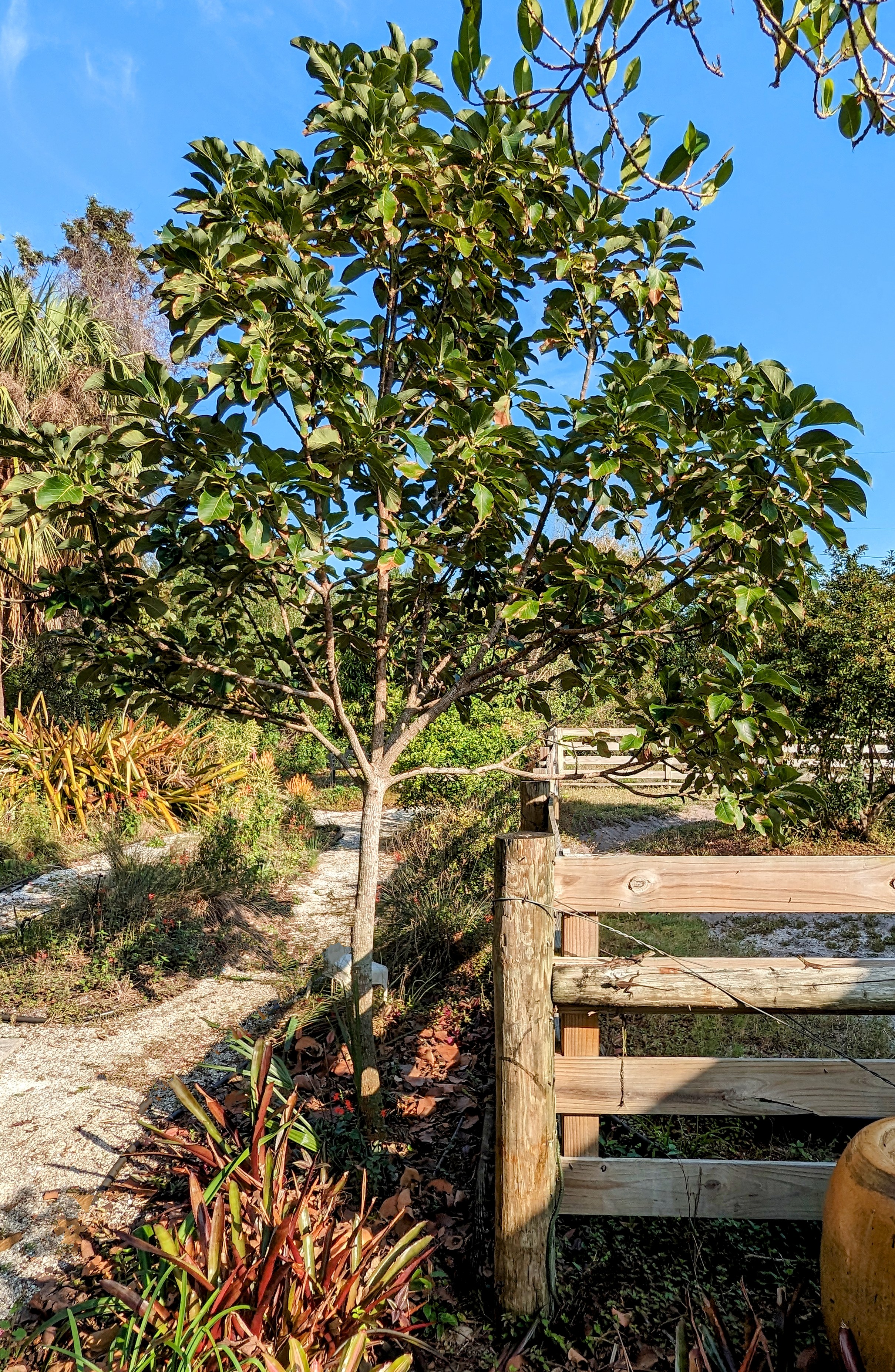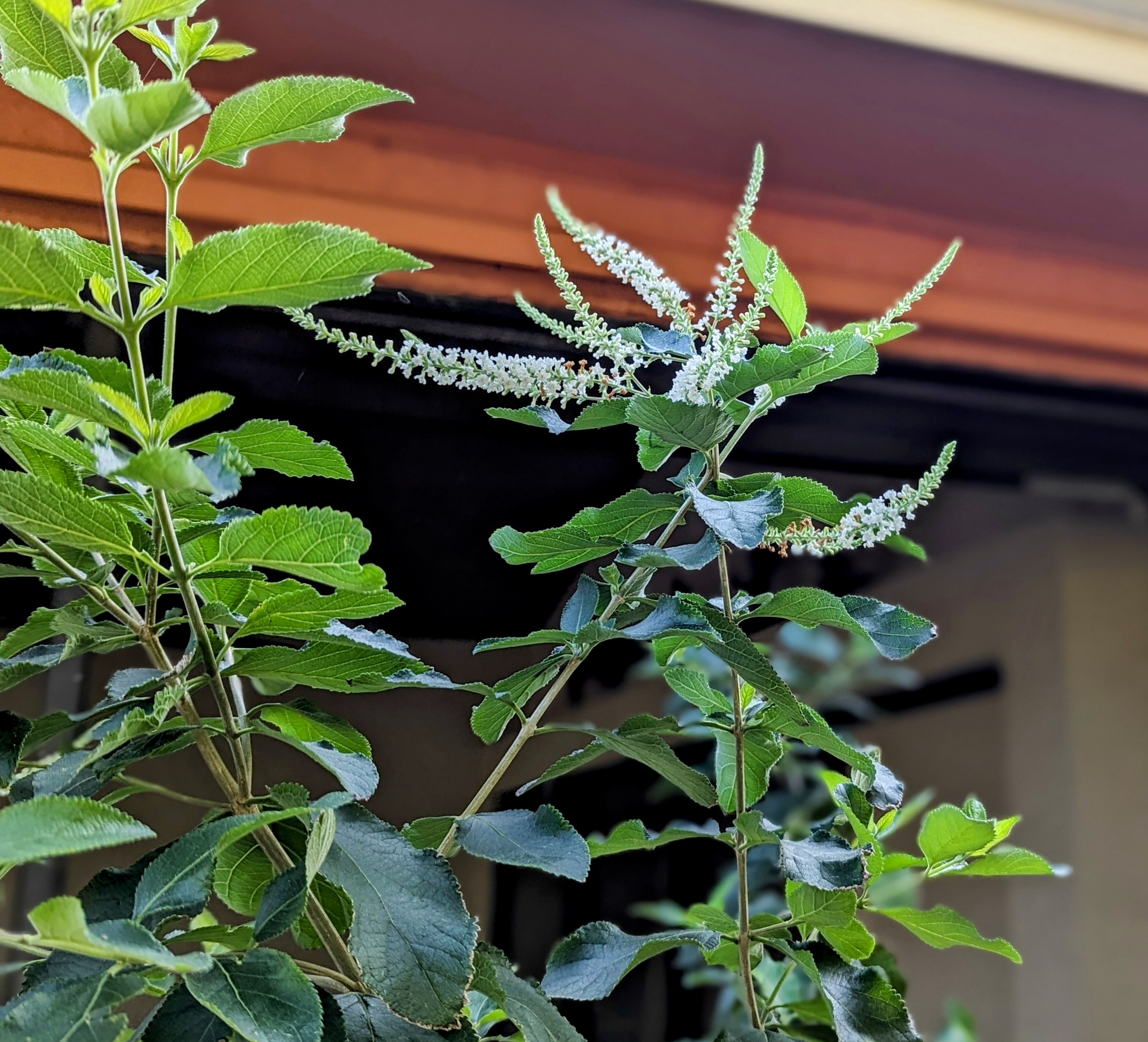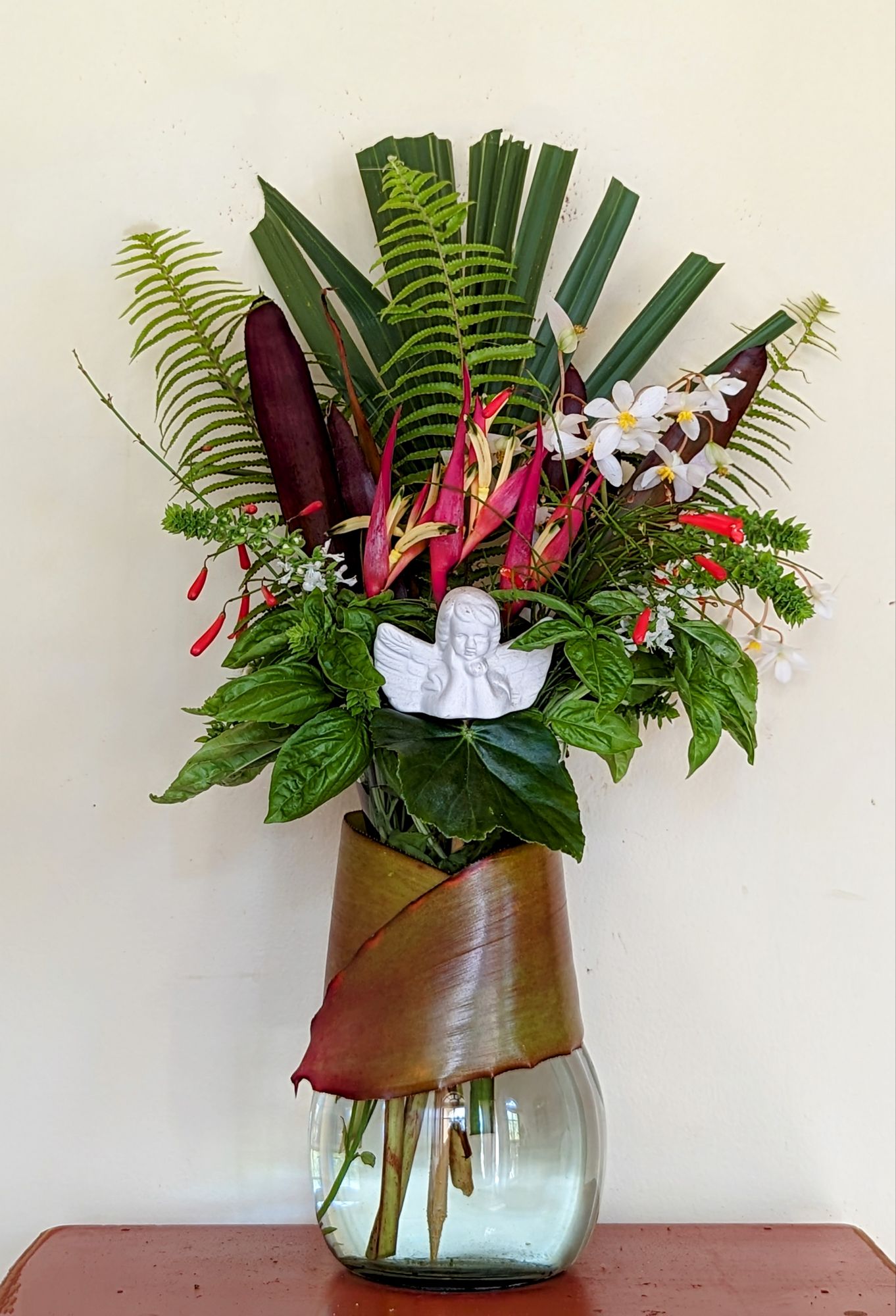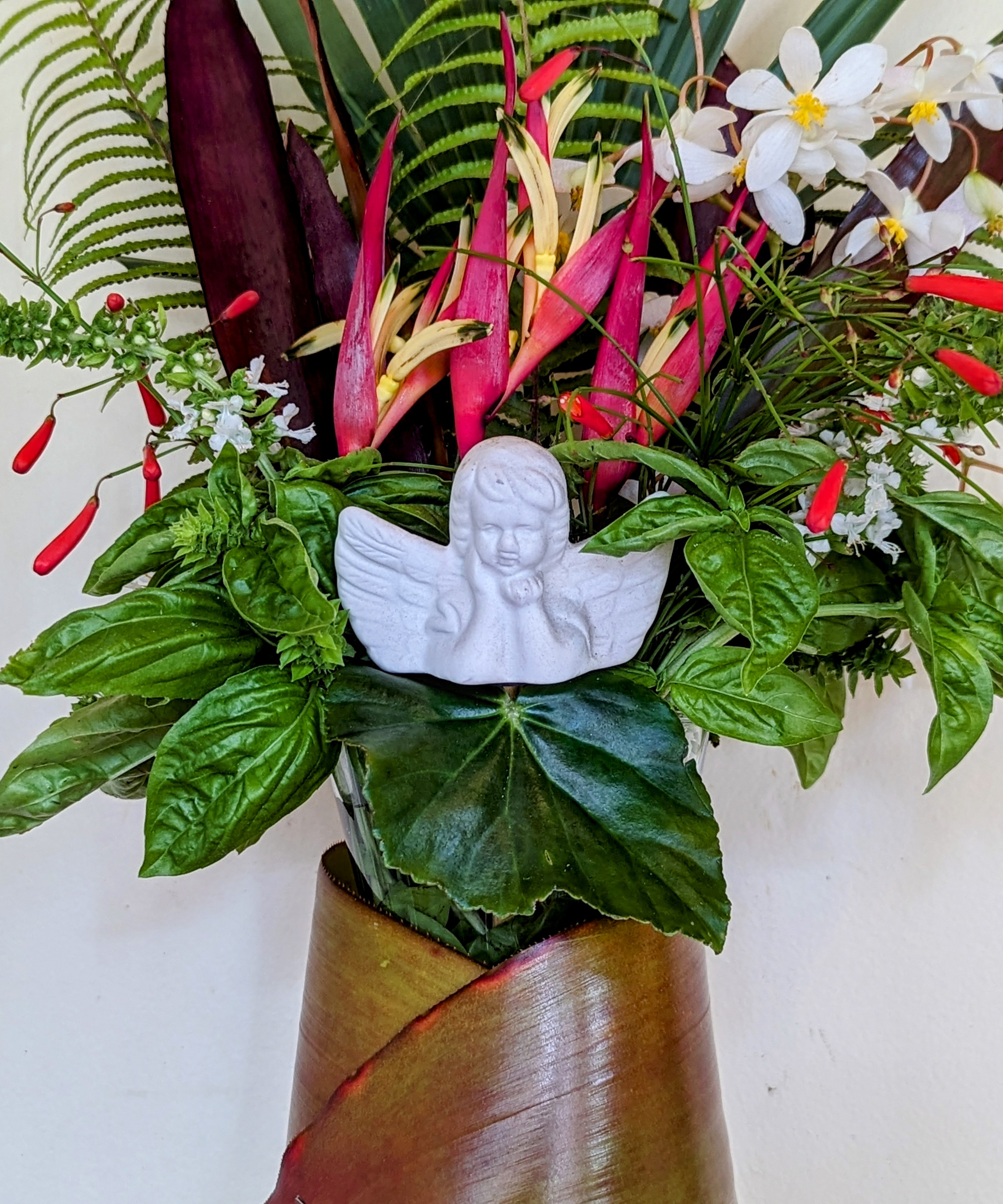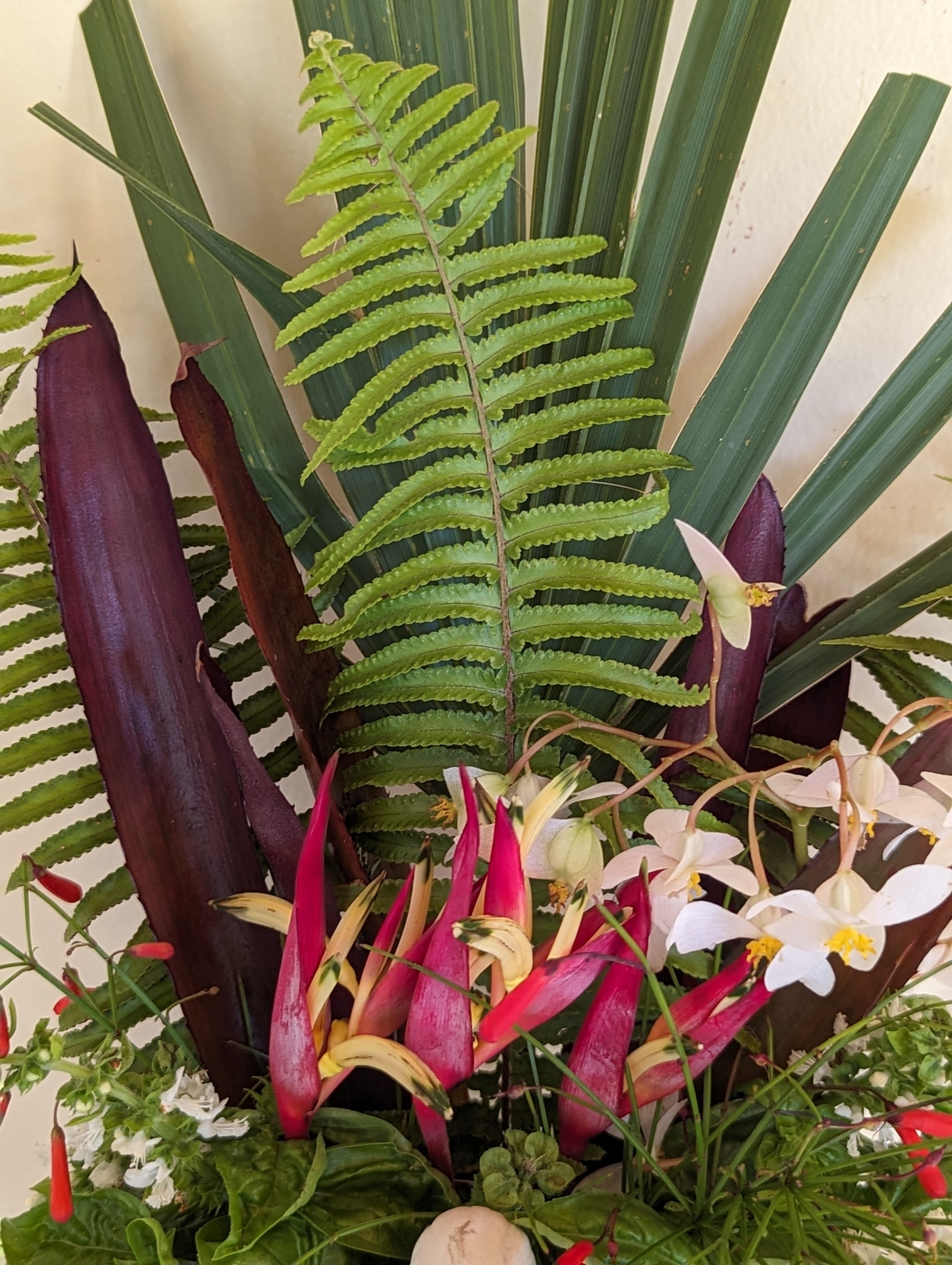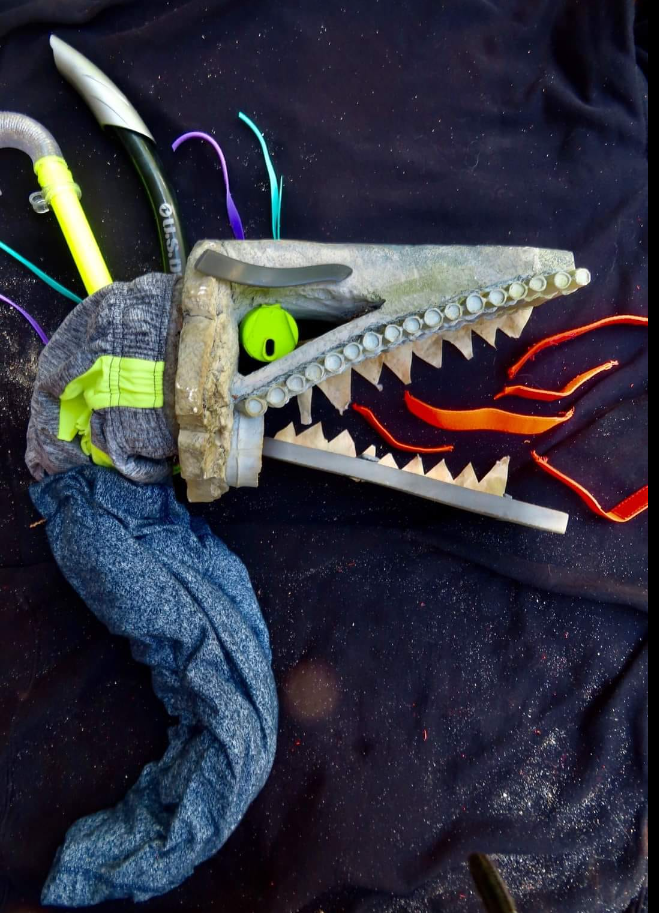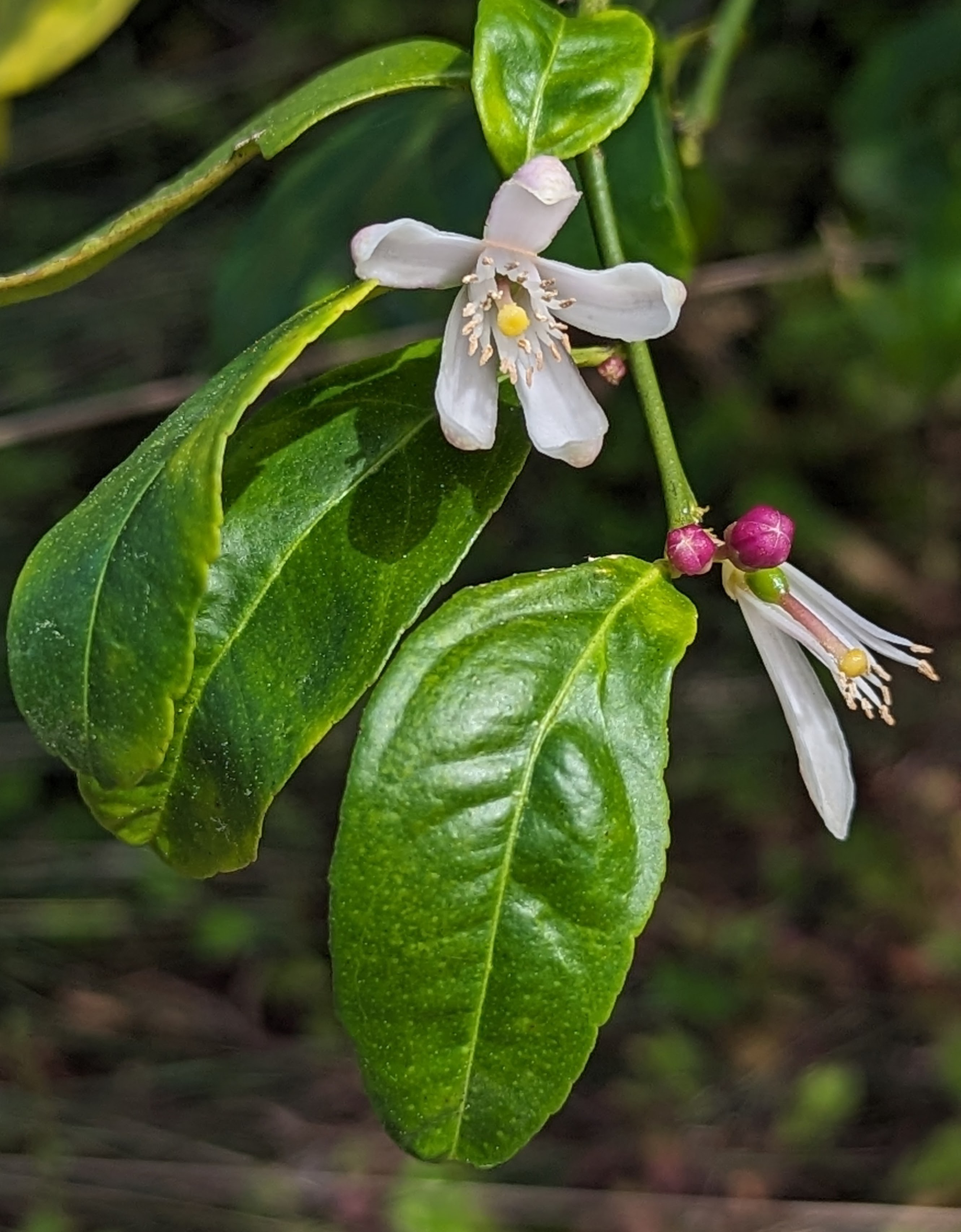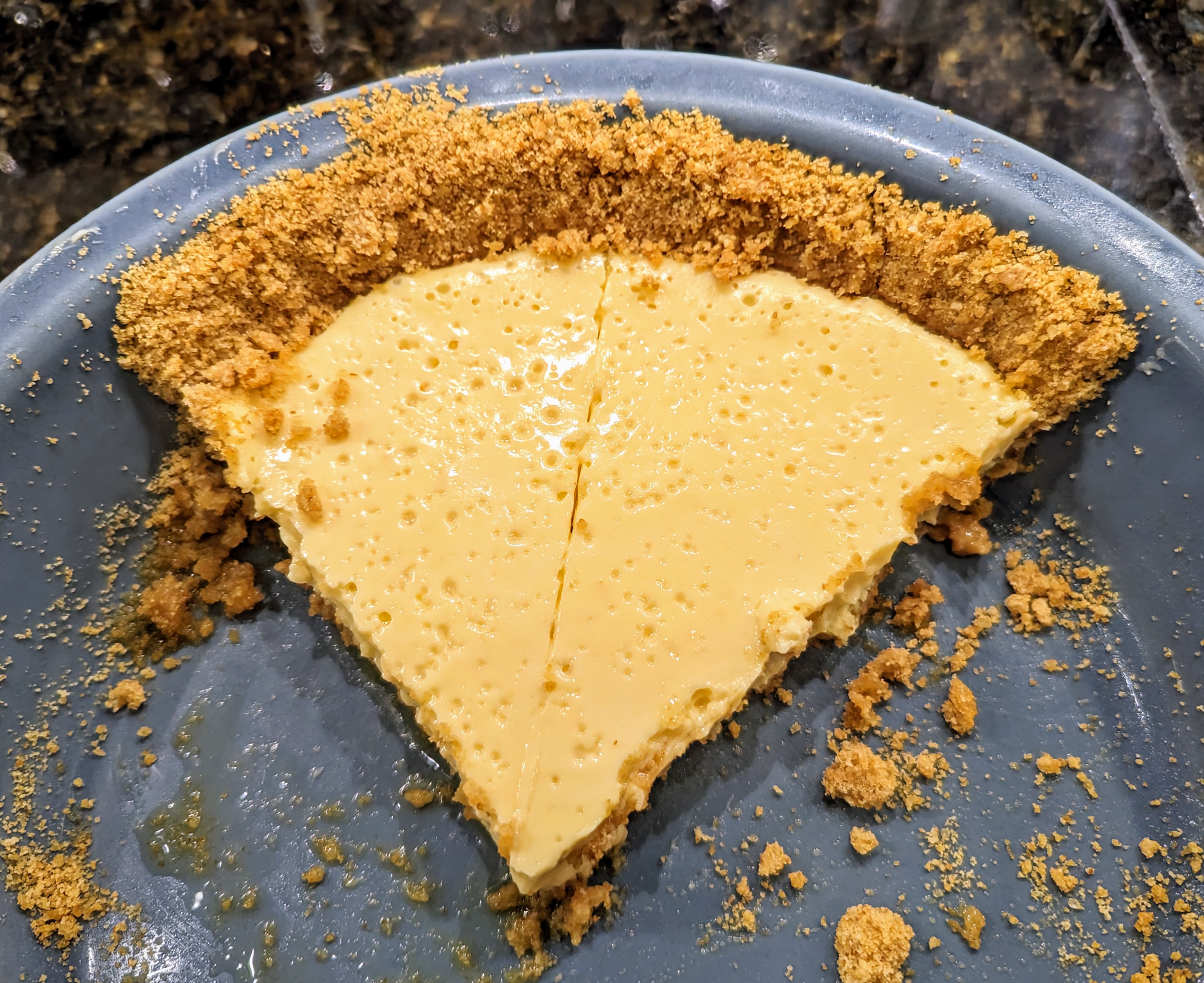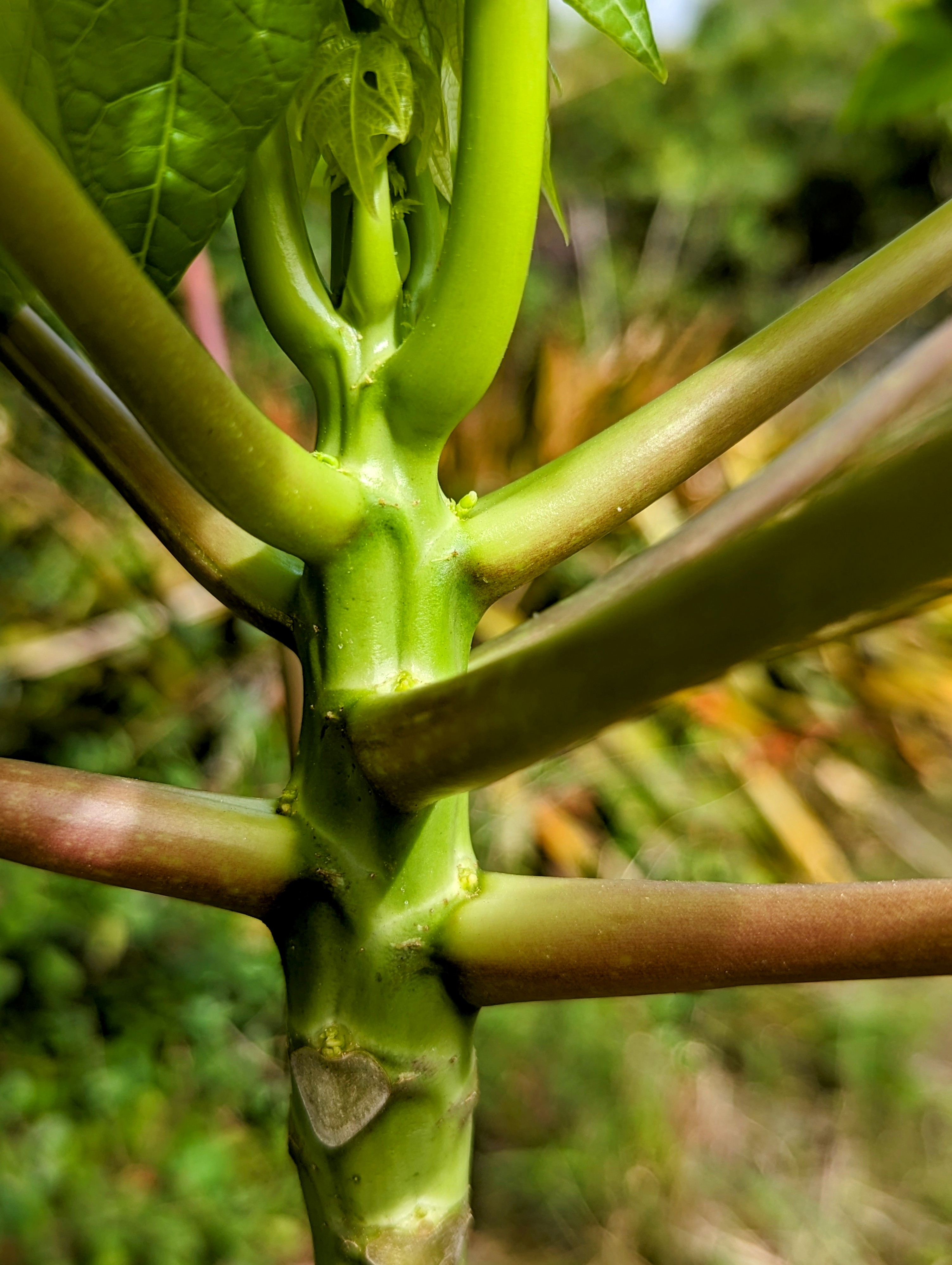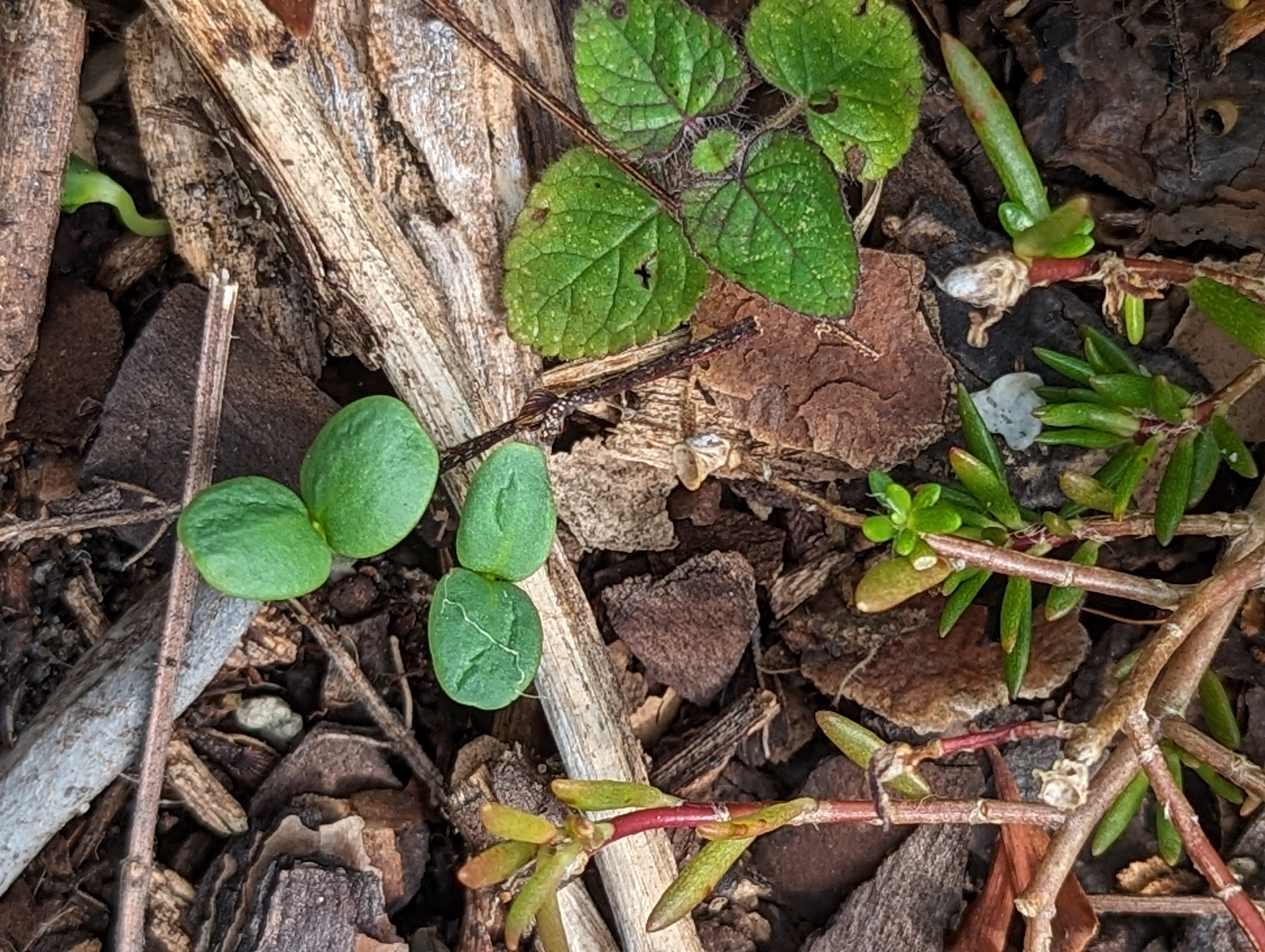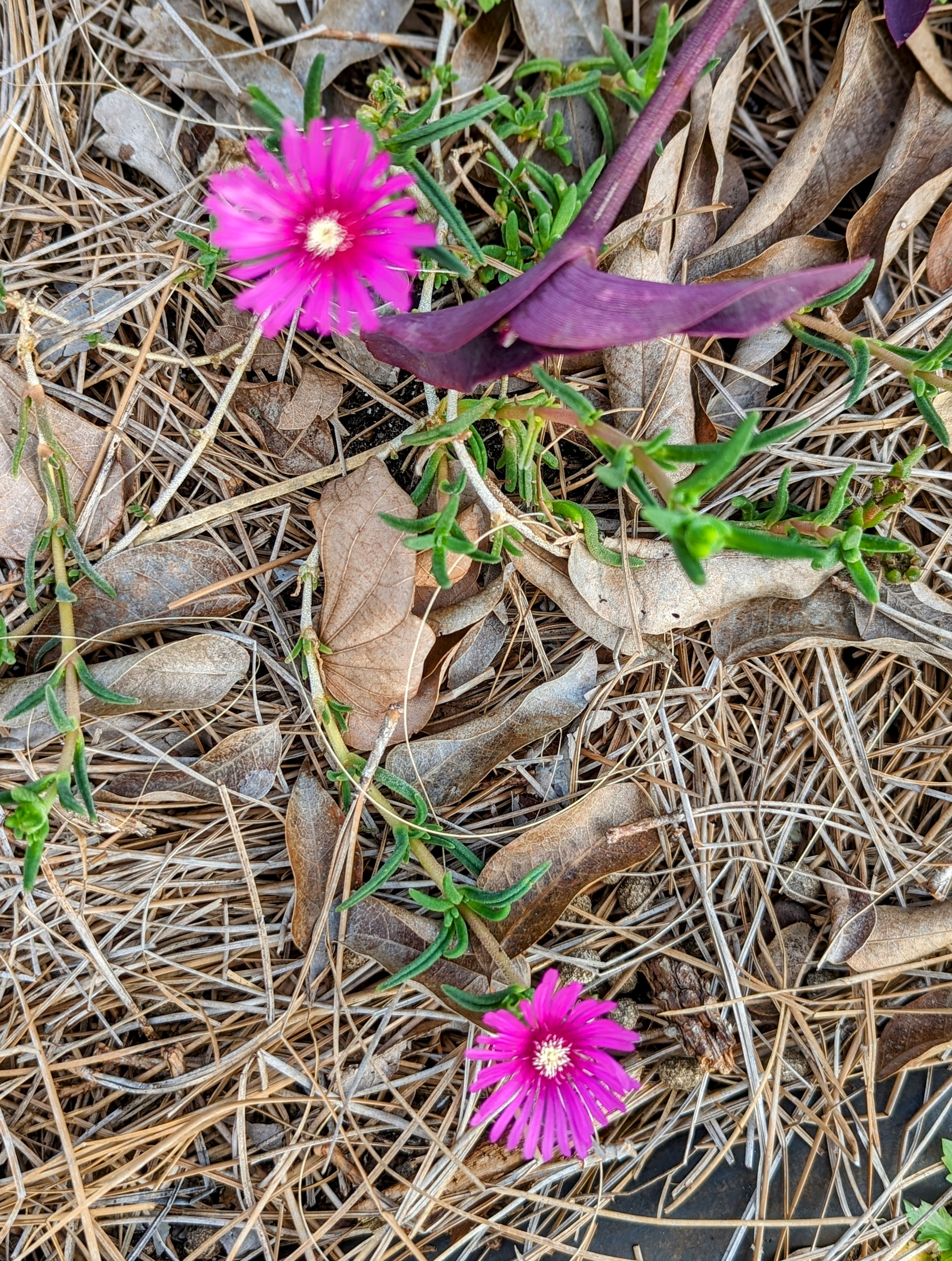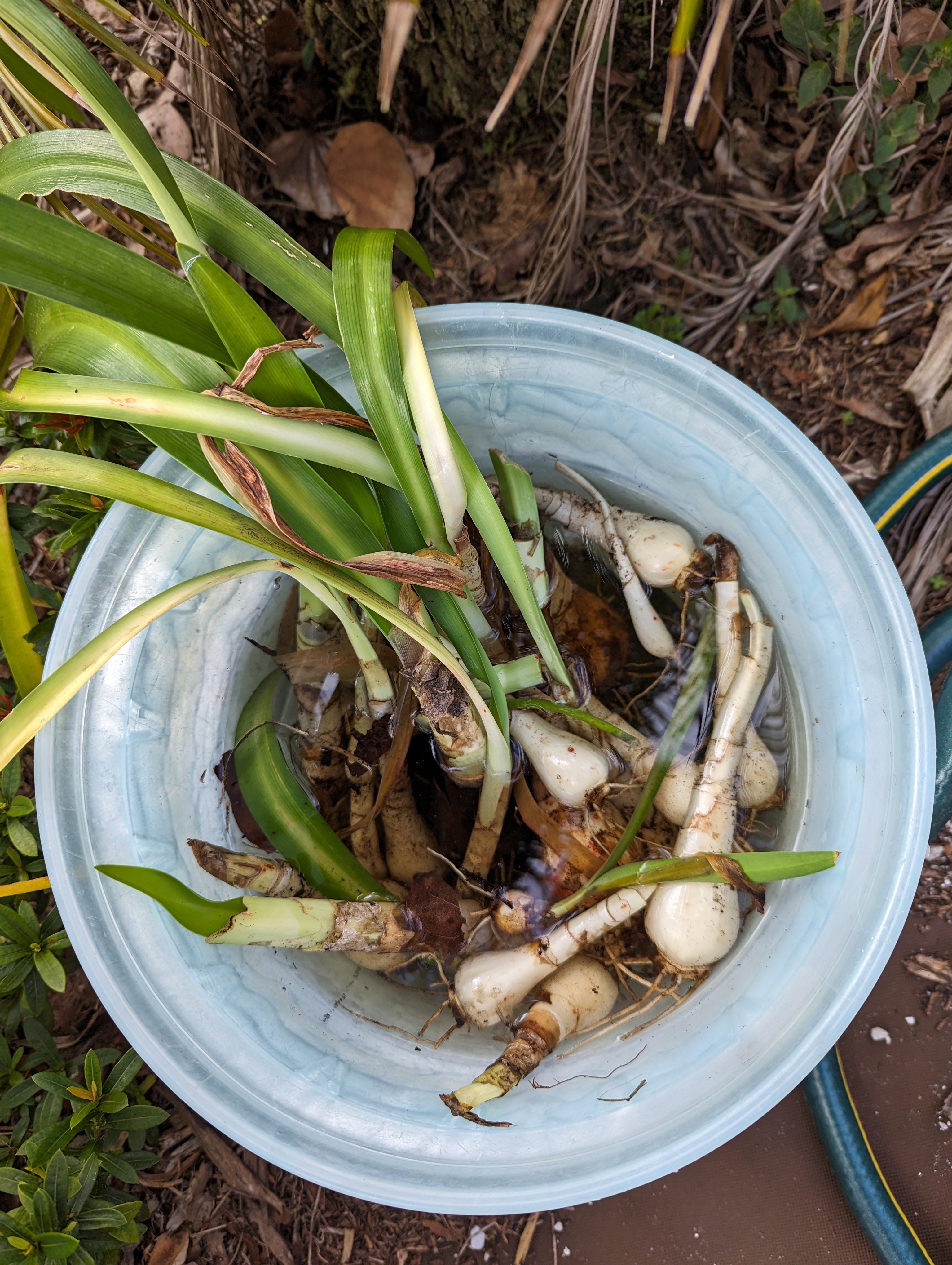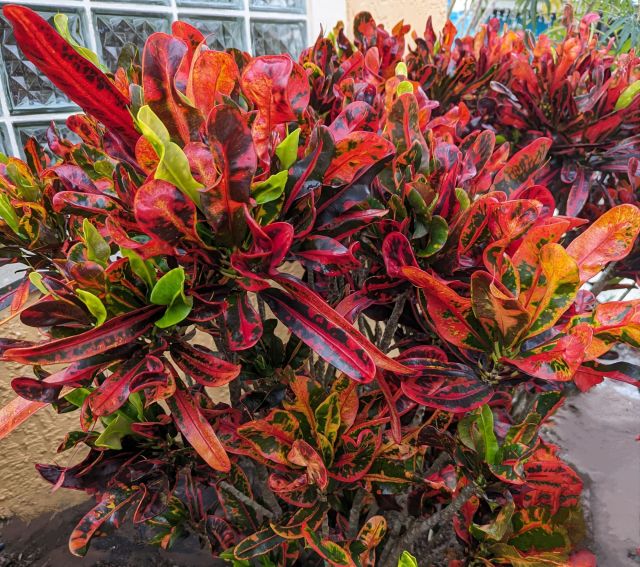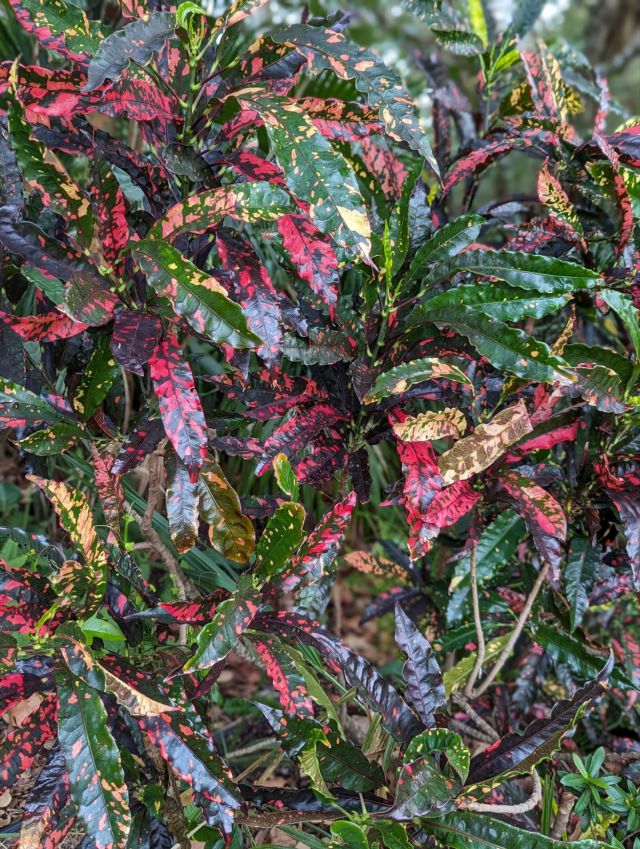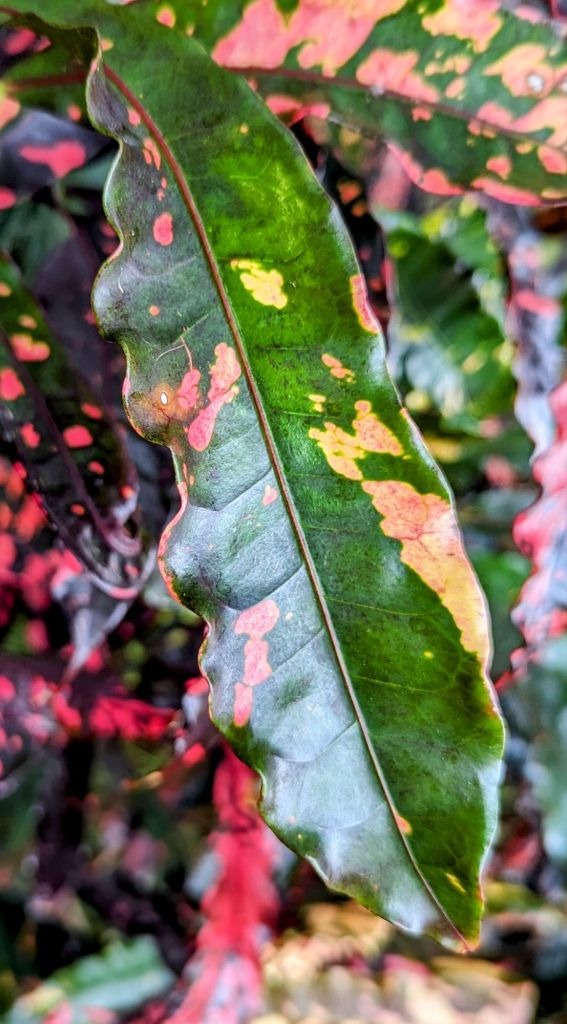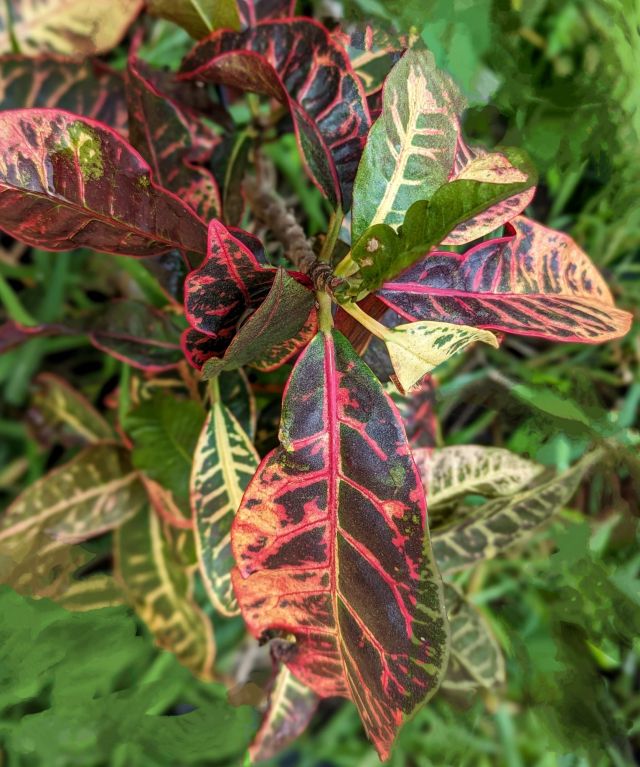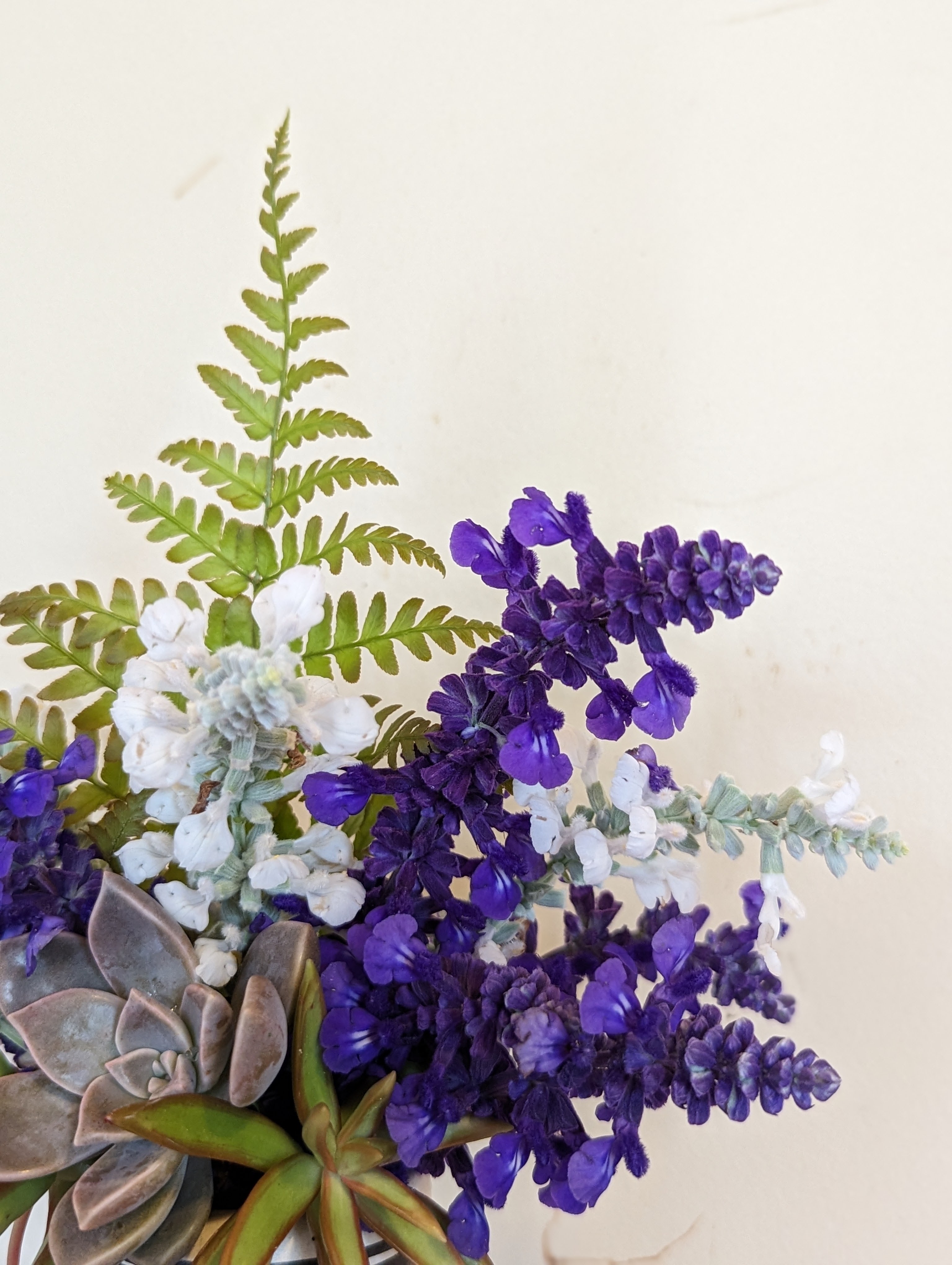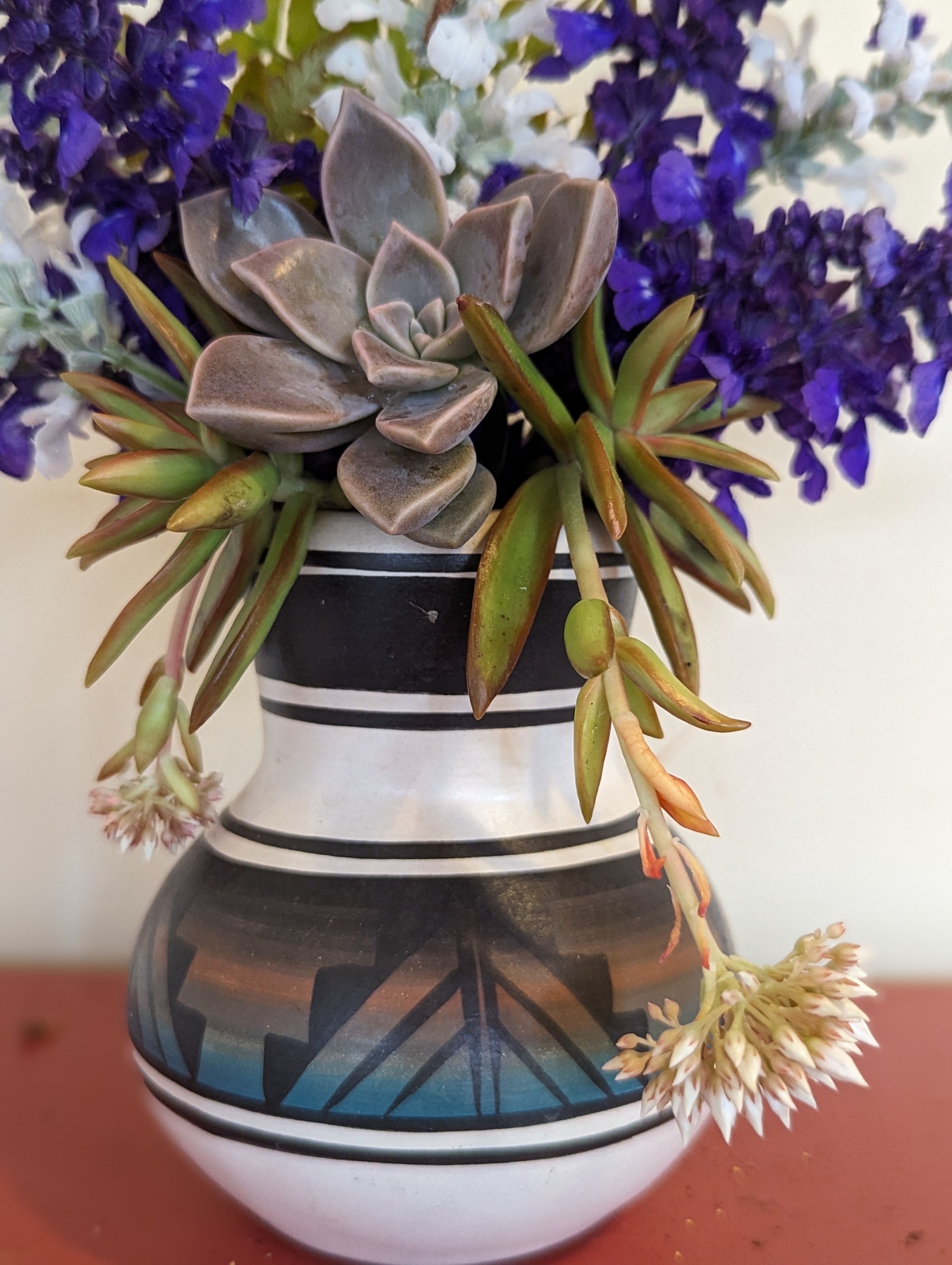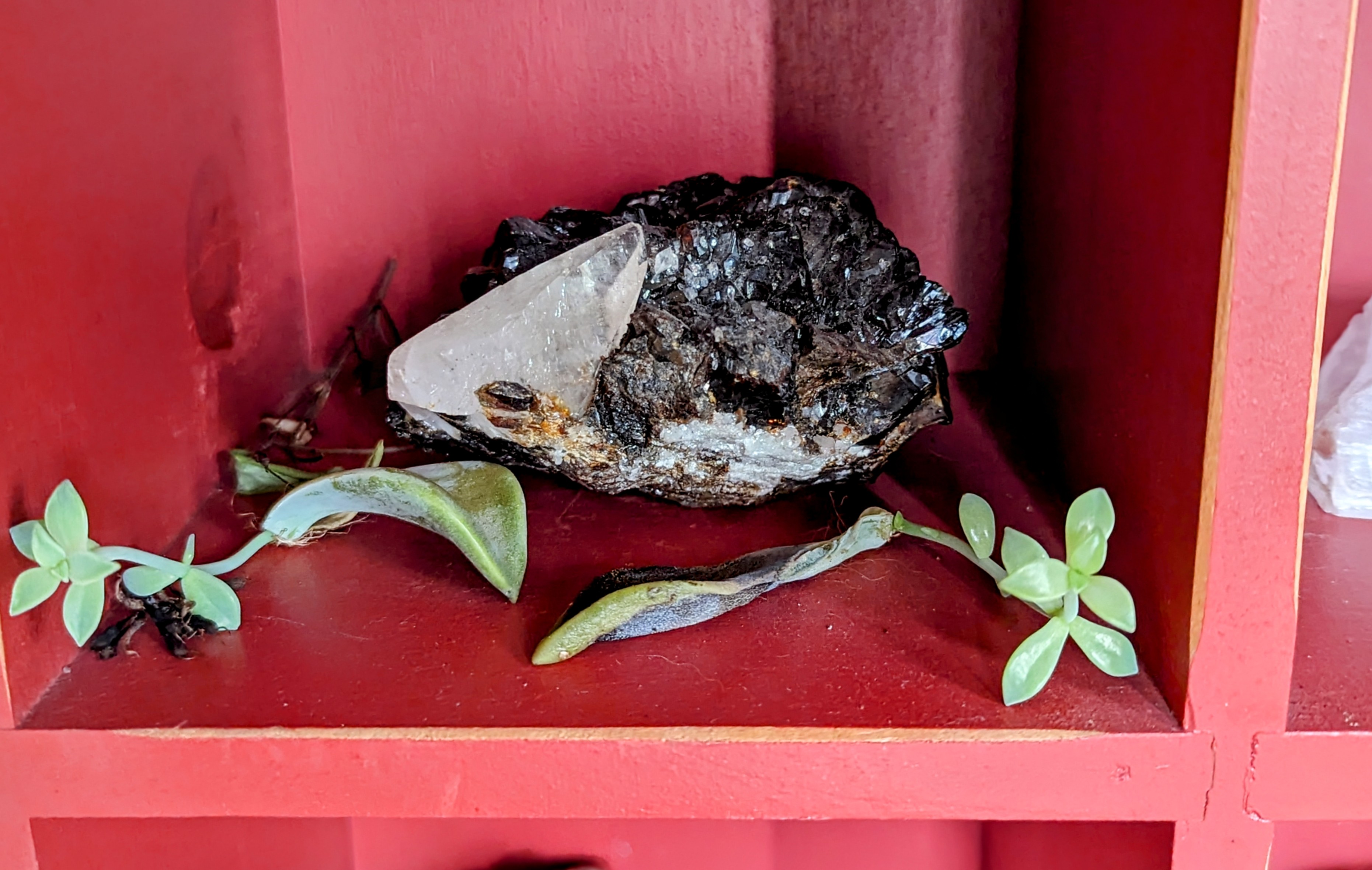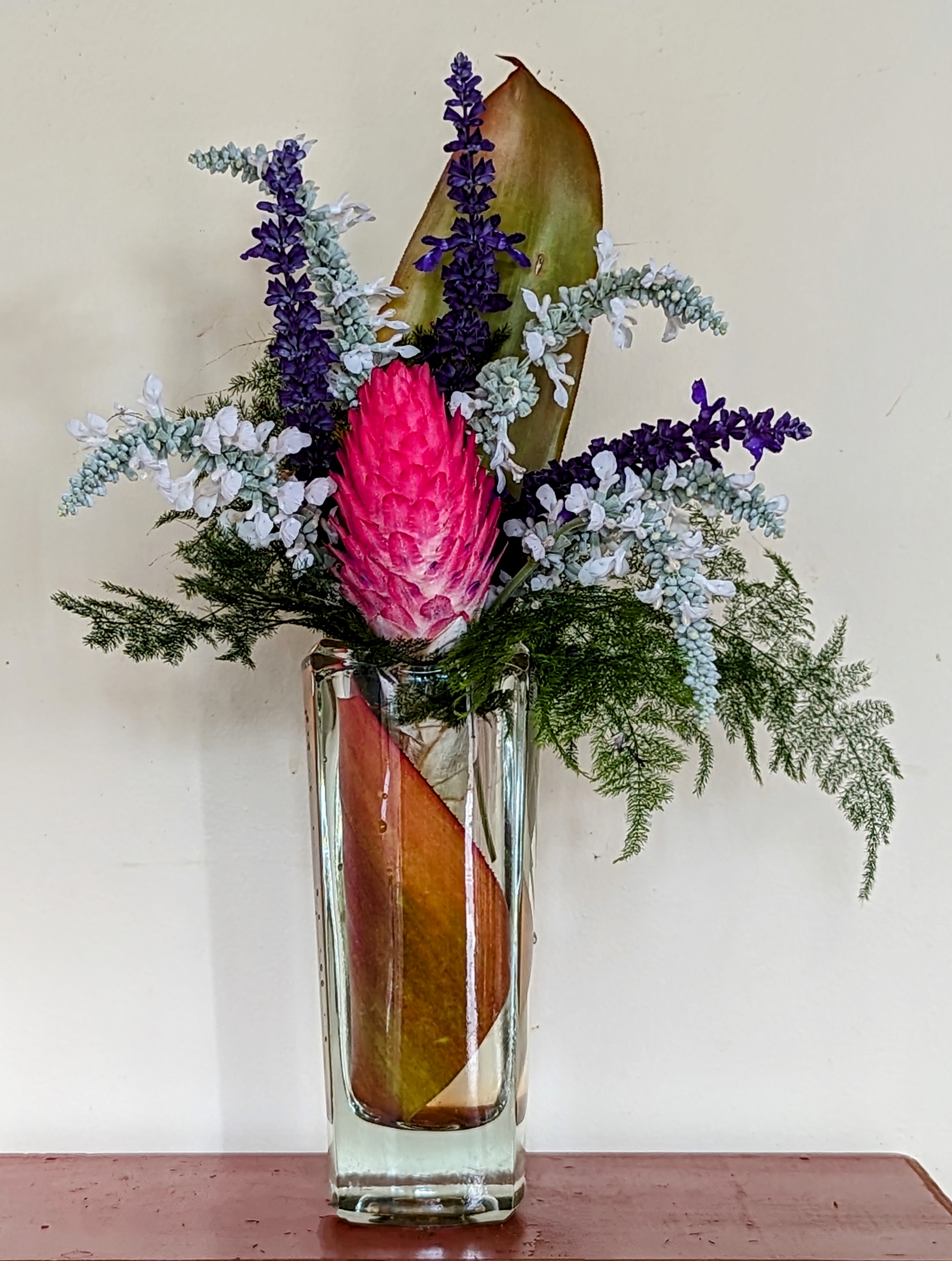
My spring roll is filled with different ingredients than one found in a Thai restaurant. A bromeliad leaf is wrapped around delicious contents from the garden. The names of some of the contents could be considered food – asparagus (fern), sage (salvia) – but I think we would be hard pressed to chew through the roll. It could possibly be considered high fiber/low carb for oh, say rodents or a passing iguana. My plan is to admire the flowers.

The ingredients:
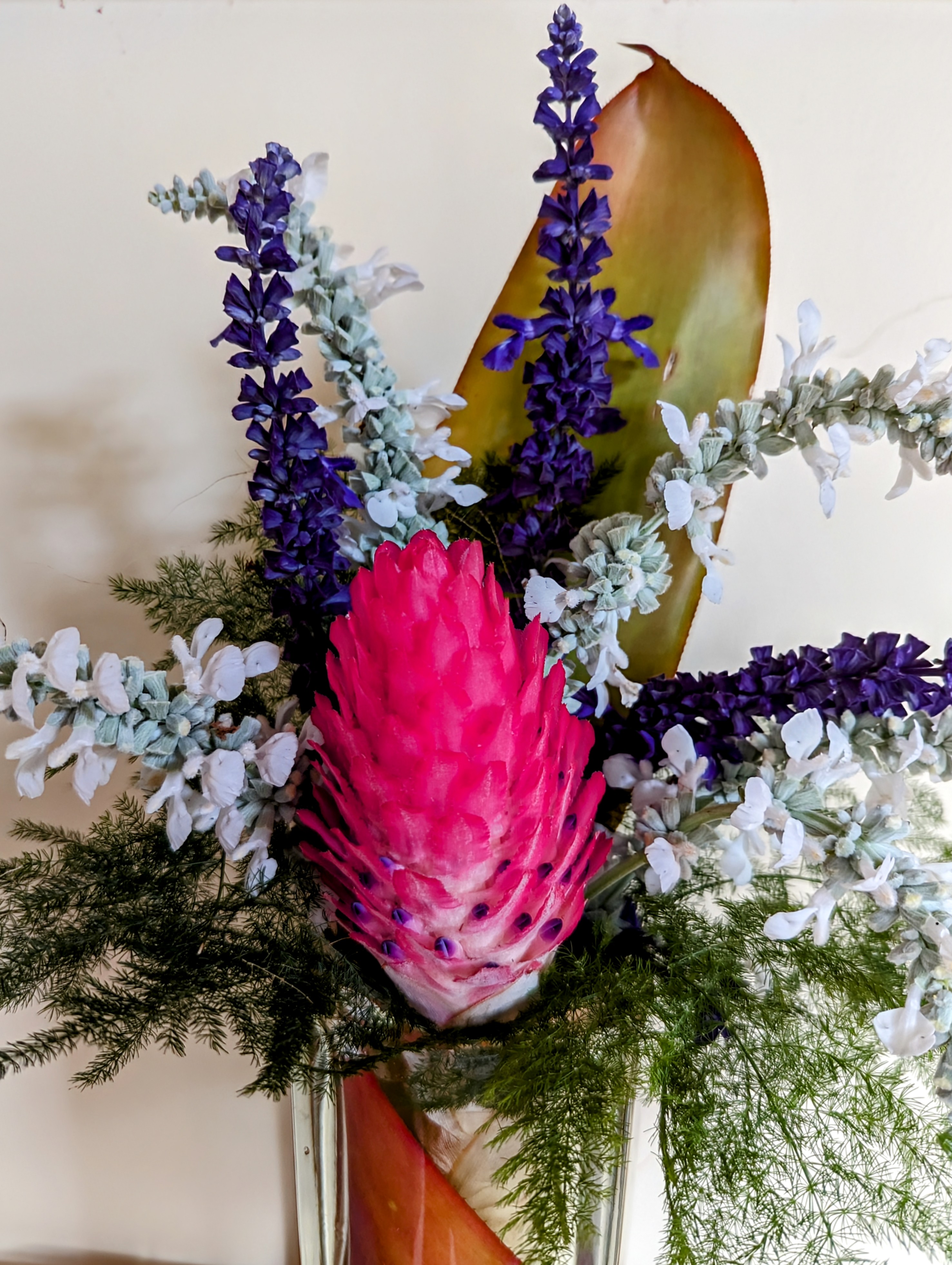
My salvias are having a great year. Here they are again, Mystic Blue and White Flame. The pink flower is known as the tulip of the Treasure Coast. They don’t really remind me of tulips, but I get it. They are actually bromeliads, Billbergia pyramidalis. Green foliage is Asparagus fern and the wrapping leaf is from Blanchetiana Bromeliad (Aechmea blanchetiana). I love the green/mahogany coloration of the Blanchetiana leaves in winter, they are chartreuse in summer.
The weather here has finally turned in favor of gardening. My tomatoes are ripening and spring is in the air. On the down side, the moles ate all the bulbs and tubers, making me realize I should stop wasting money on these lovelies. I also accidentally grew some rabbit tobacco I thought was Chinese Forget Me Nots, oh well. Rabbit tobacco is a weed and a rite of passage in my youth. Boys would smoke it pretending like it was cigarettes! I am told it was harsh, but I never tried it.
Thanks to Cathy for hosting this weekly meme. Follow this link to see more vases.

